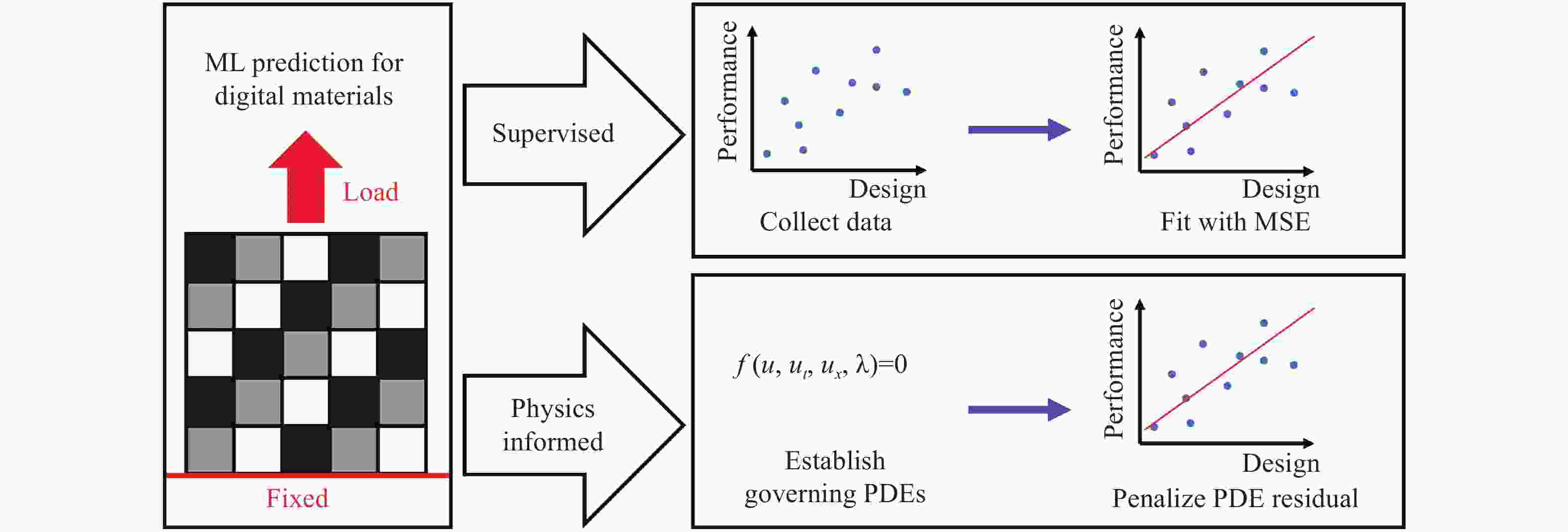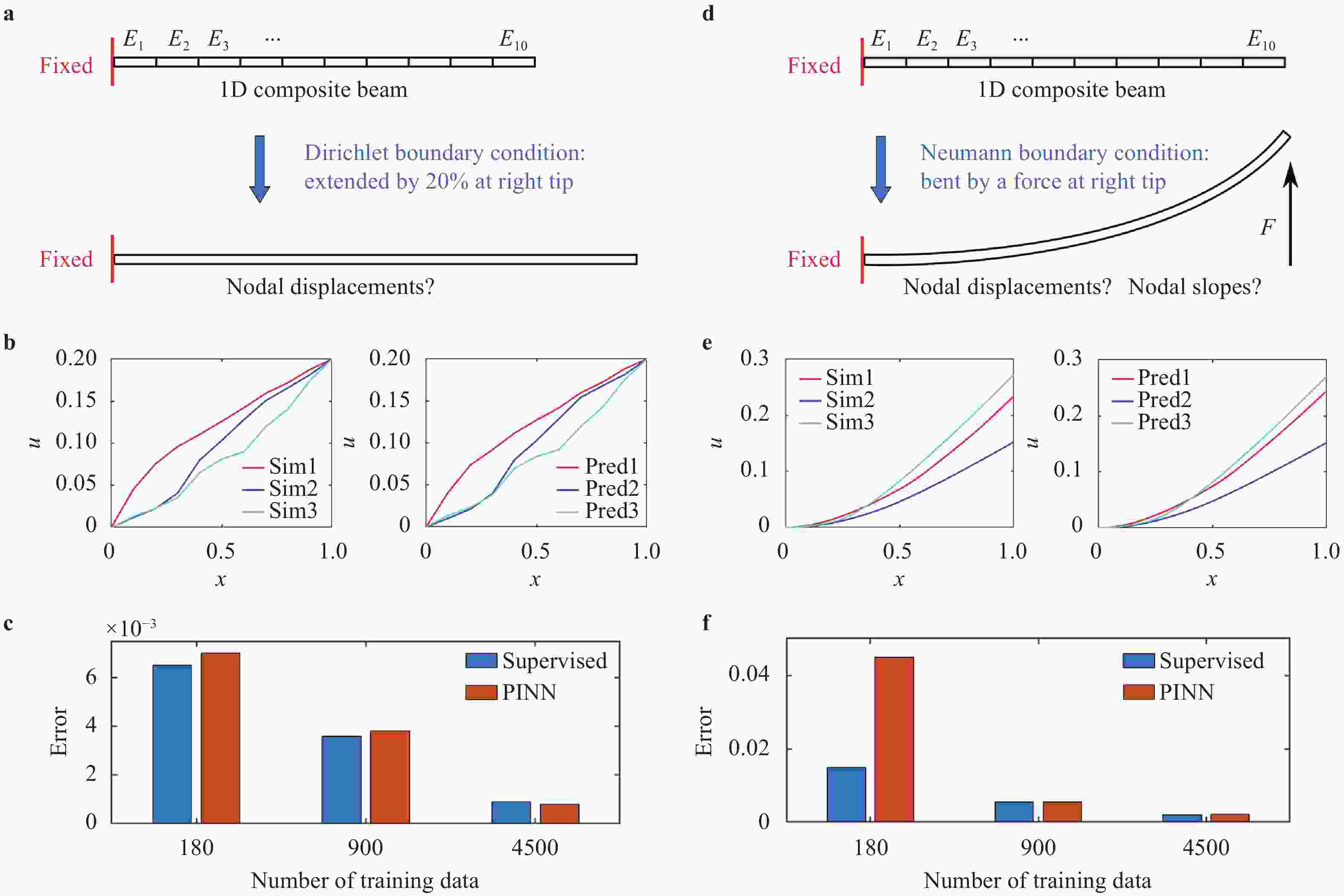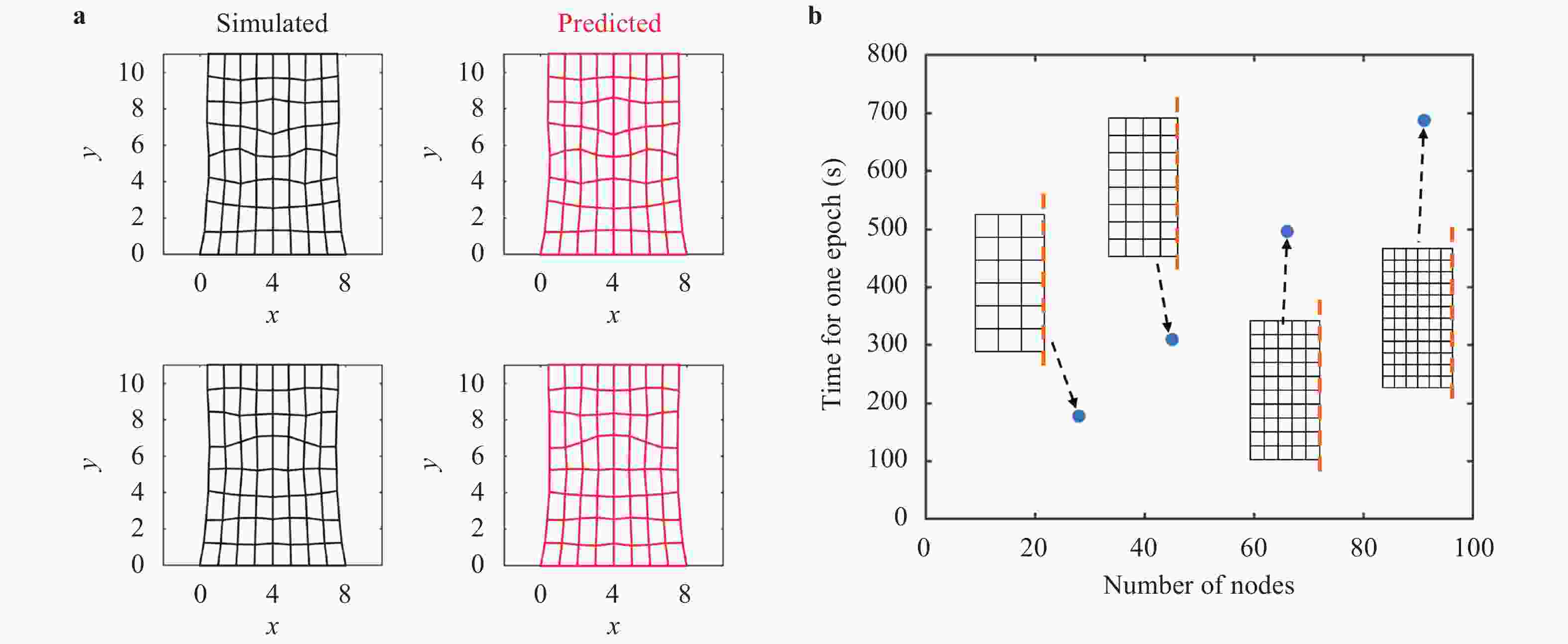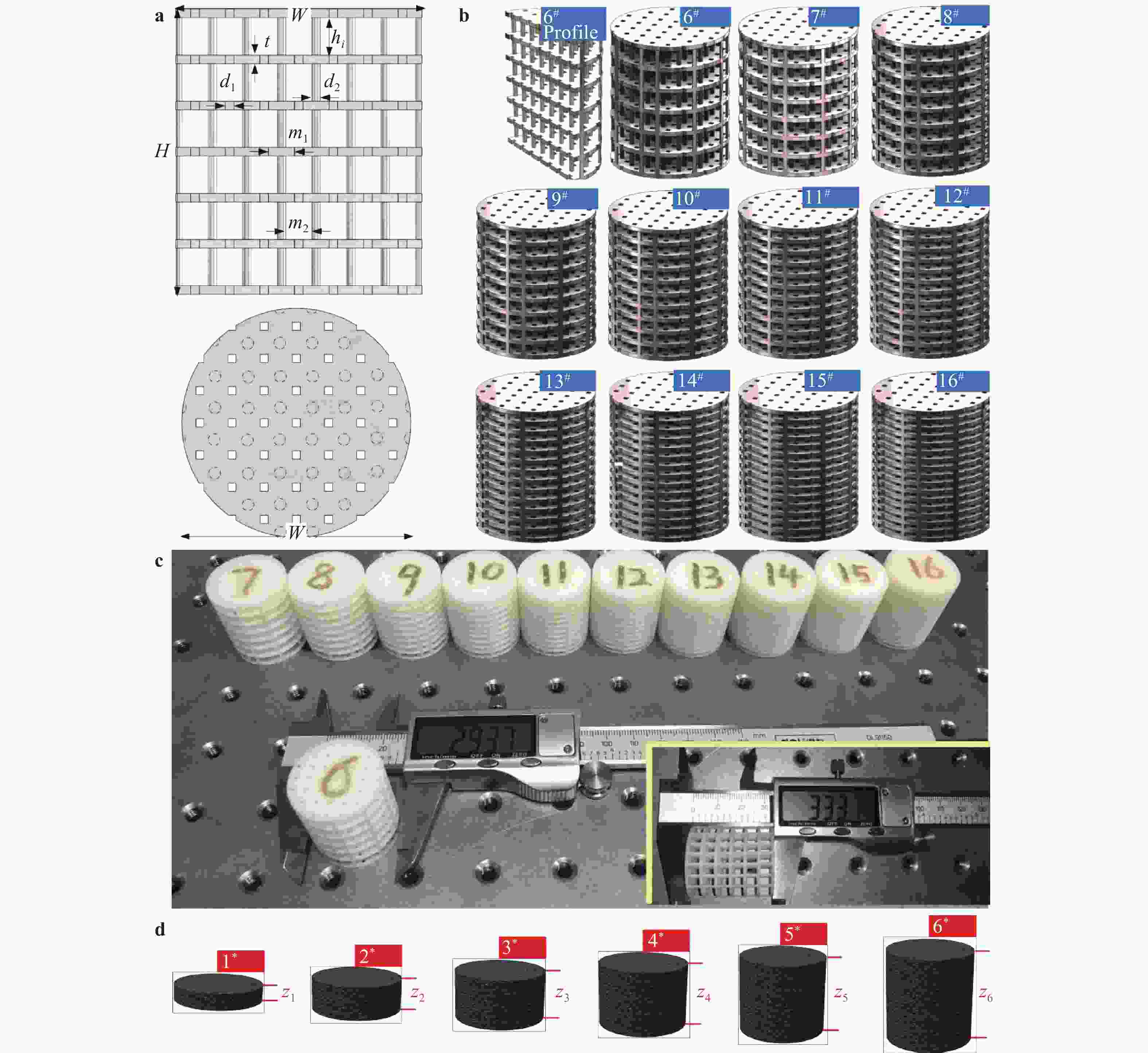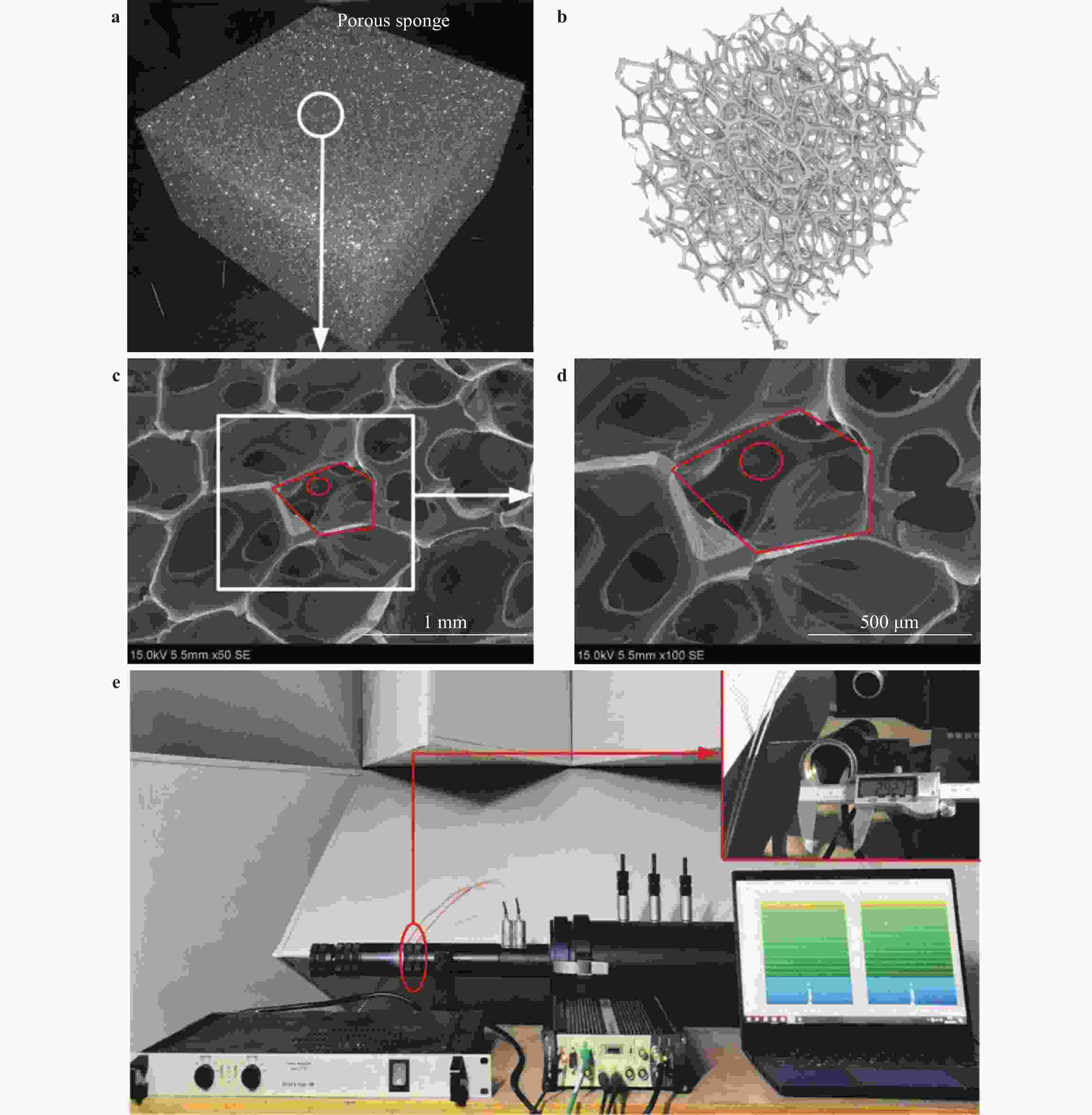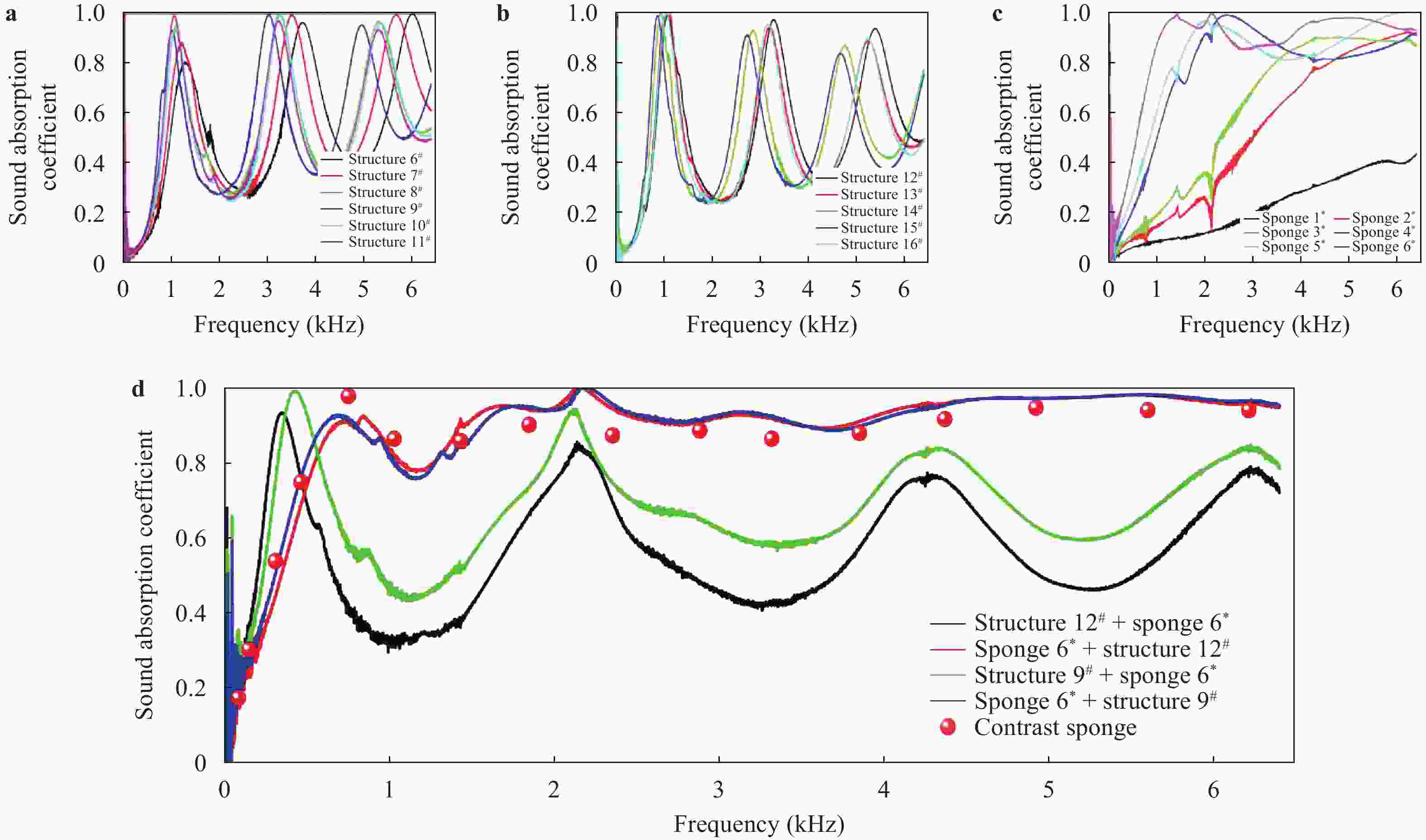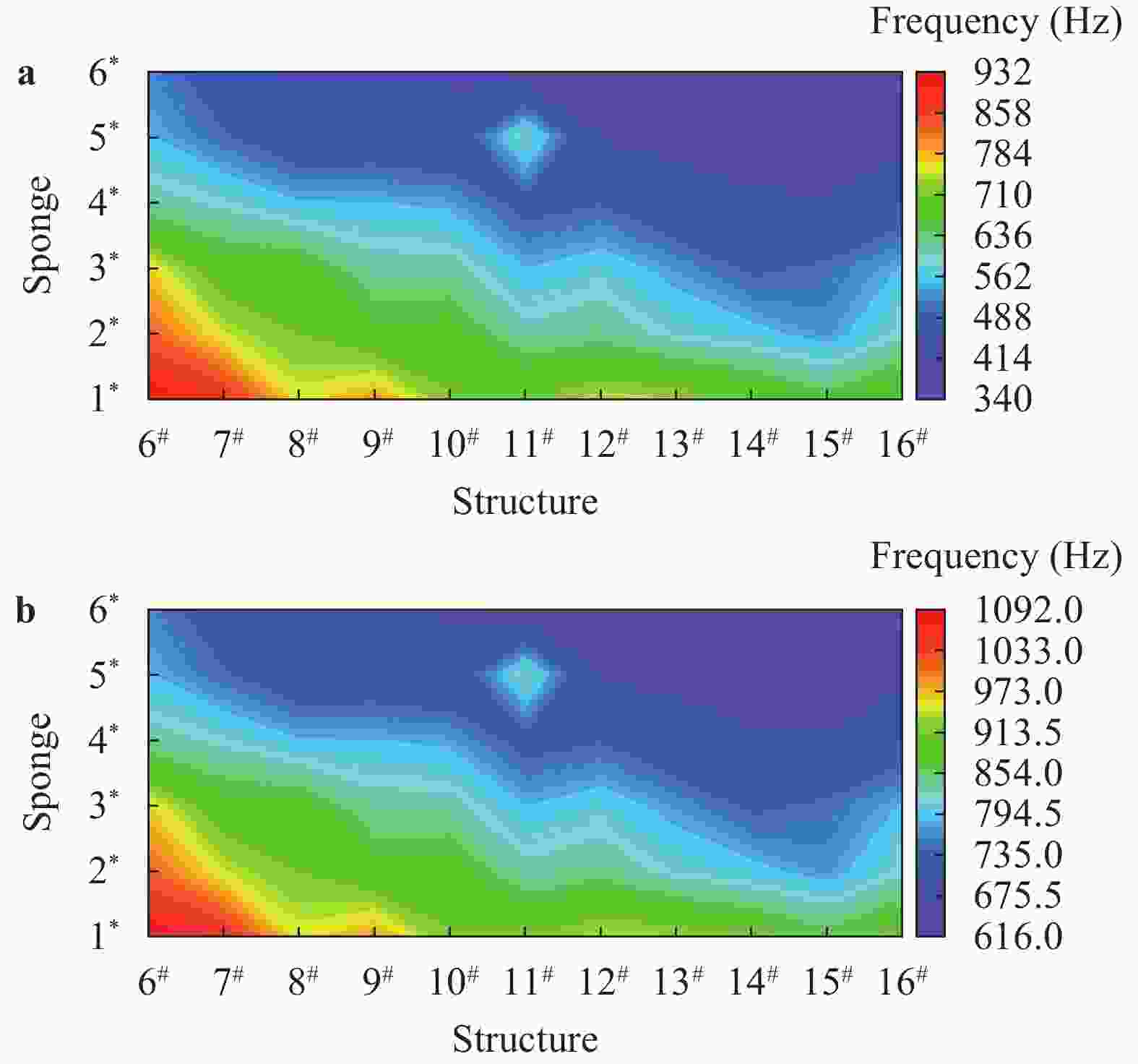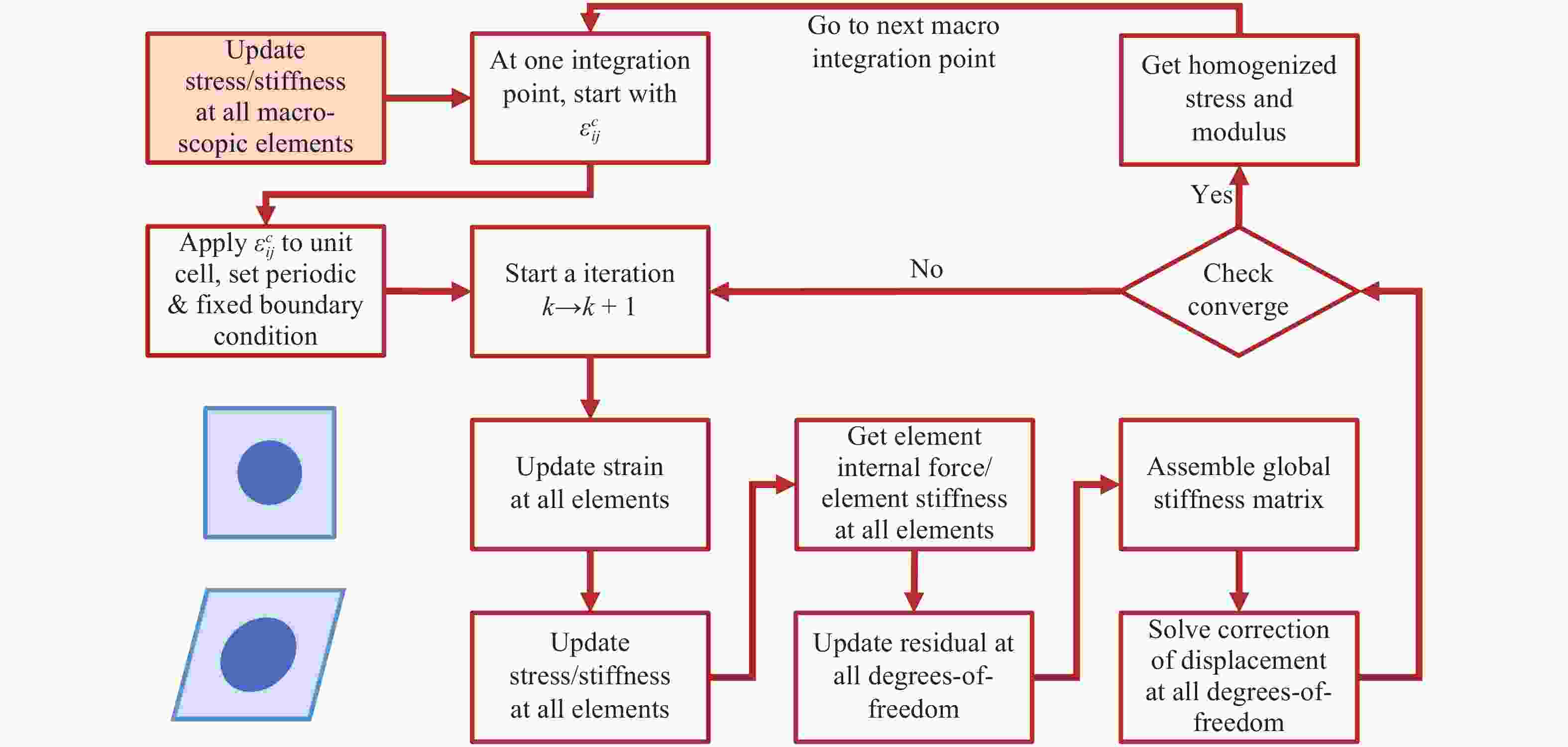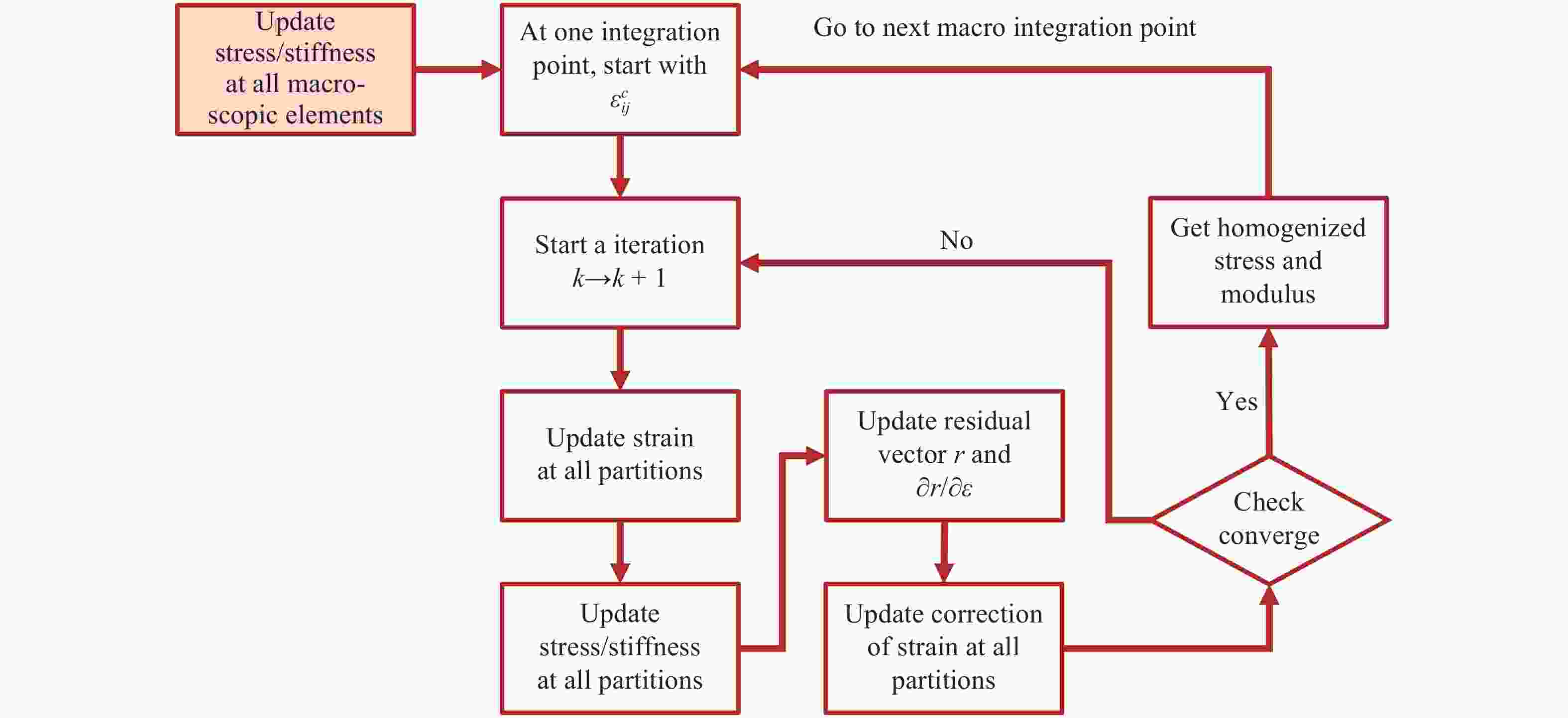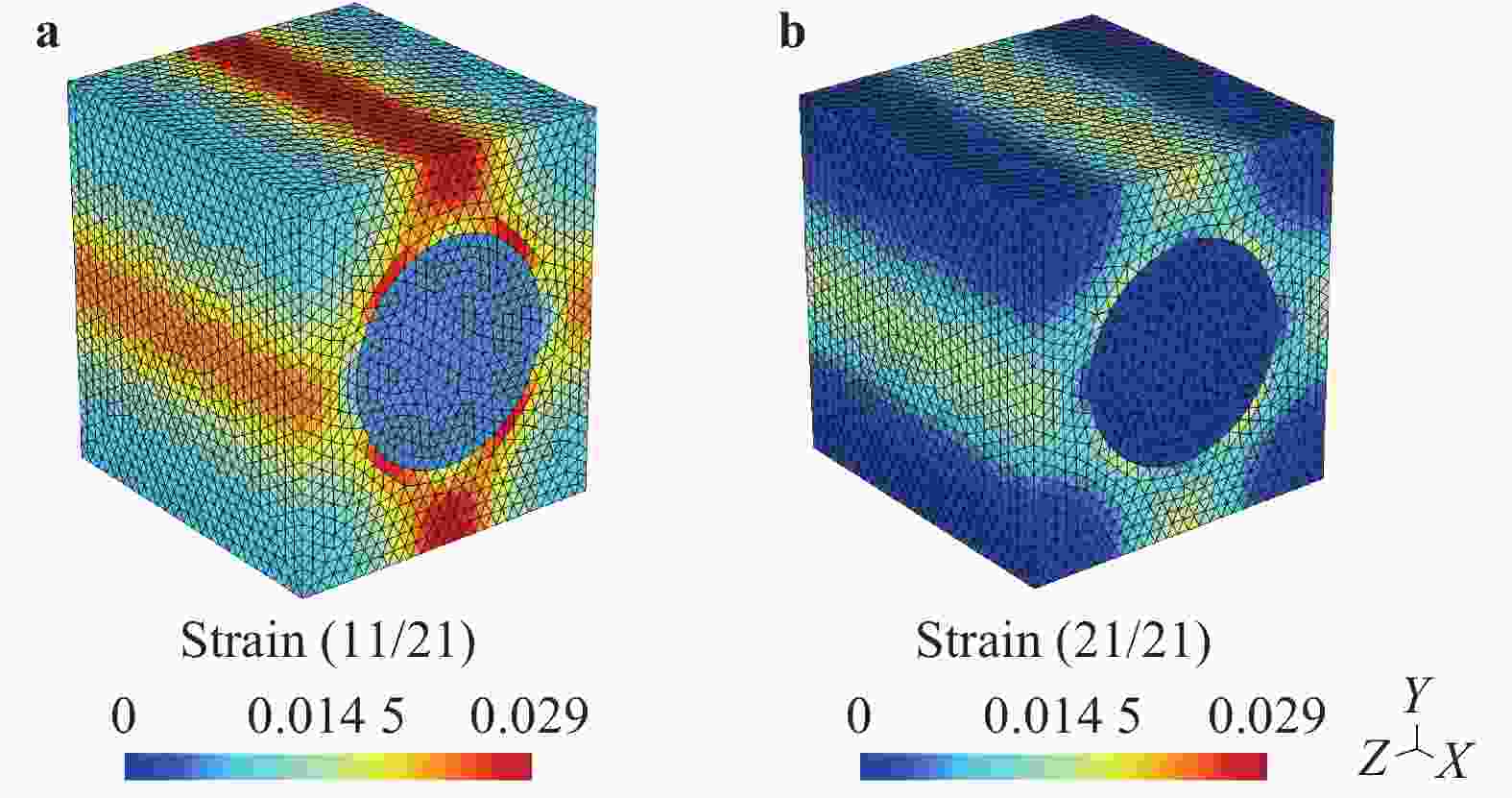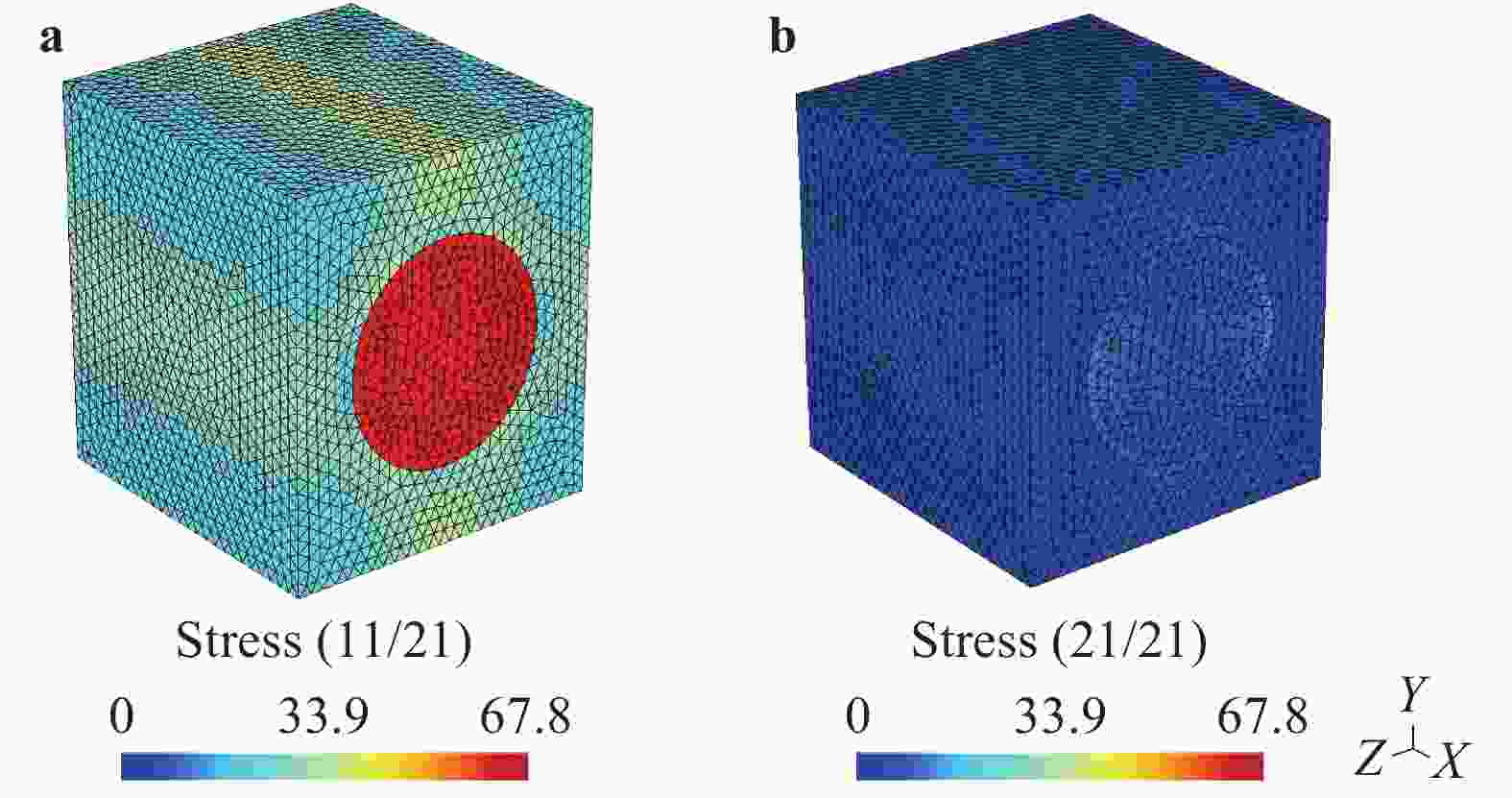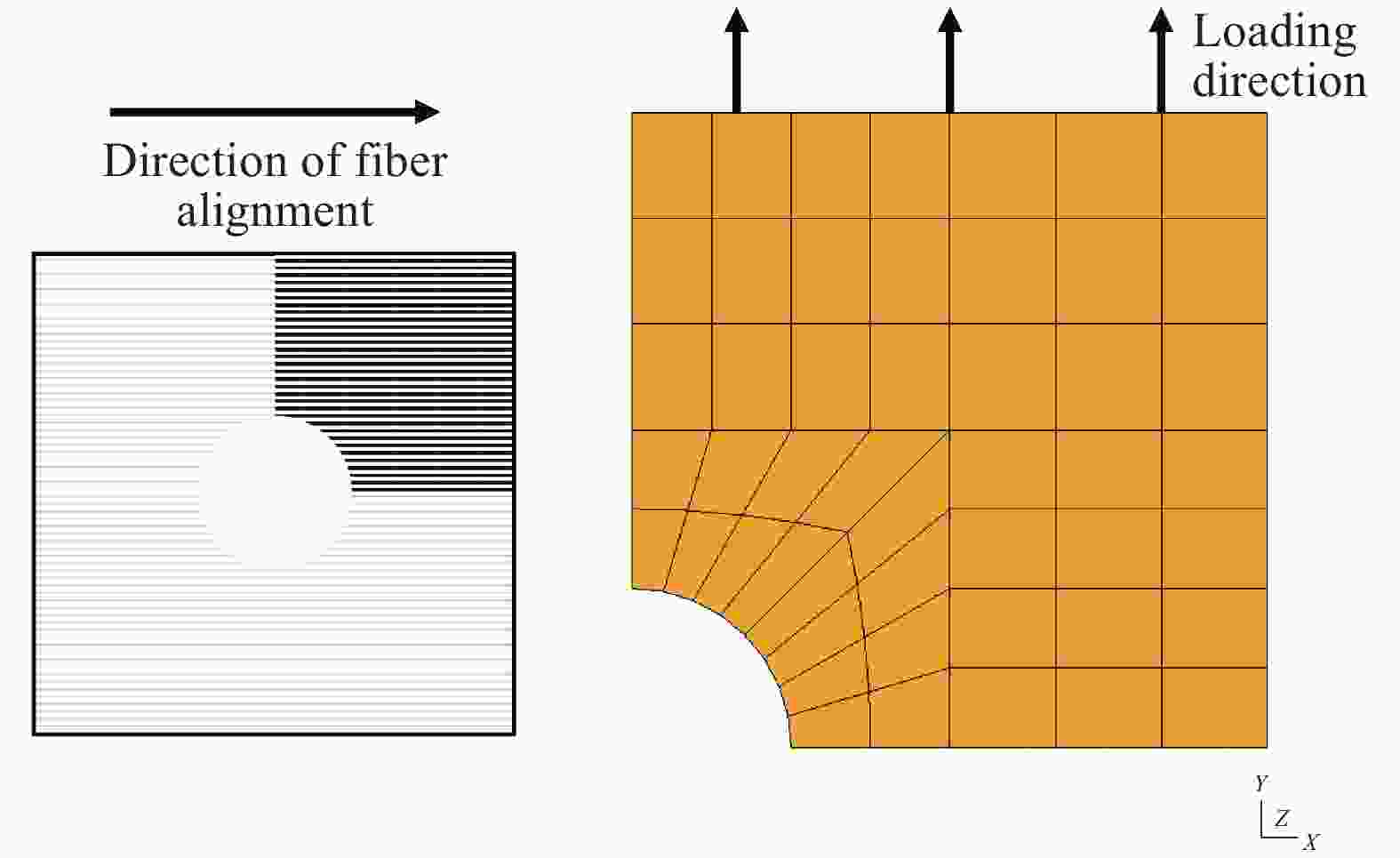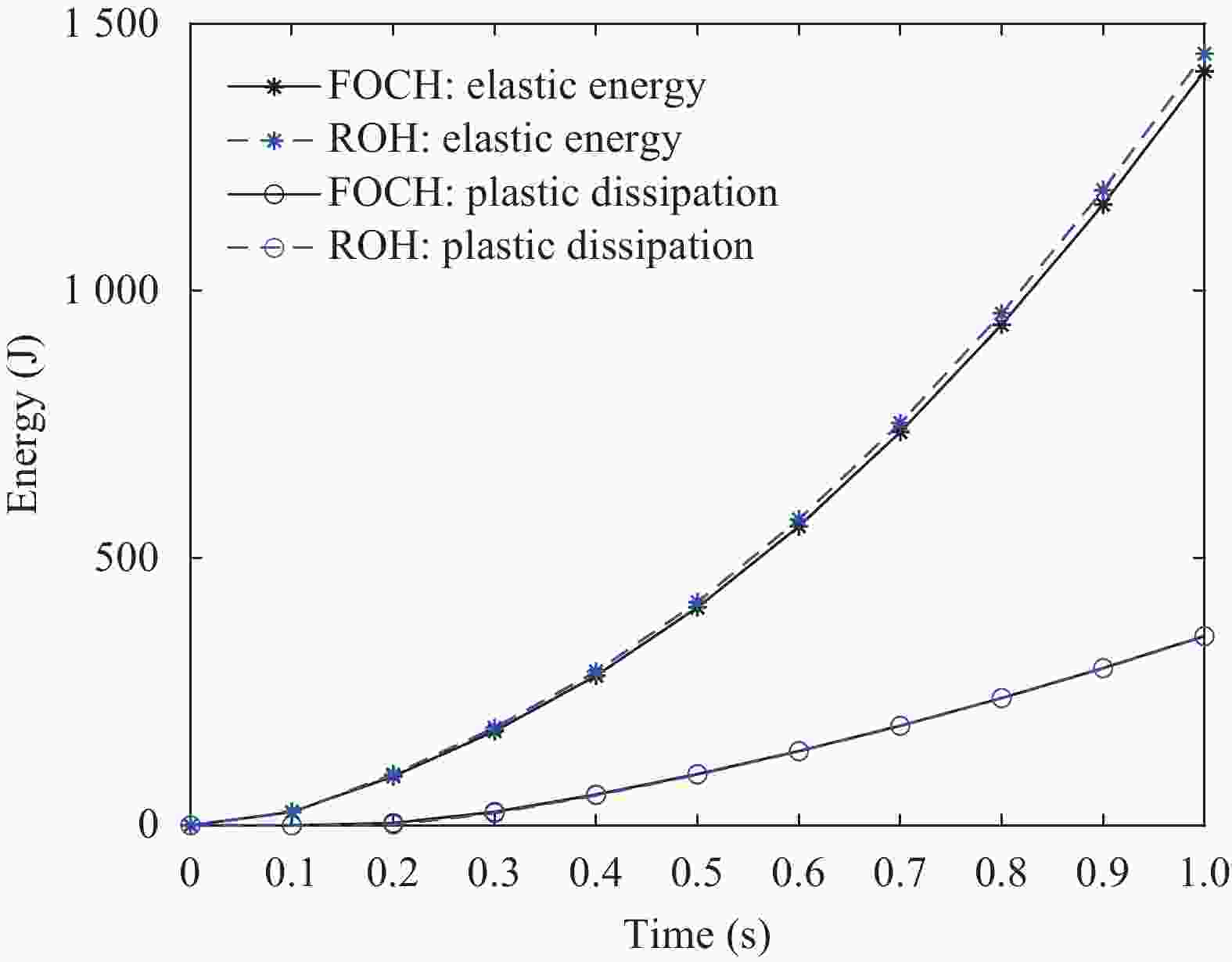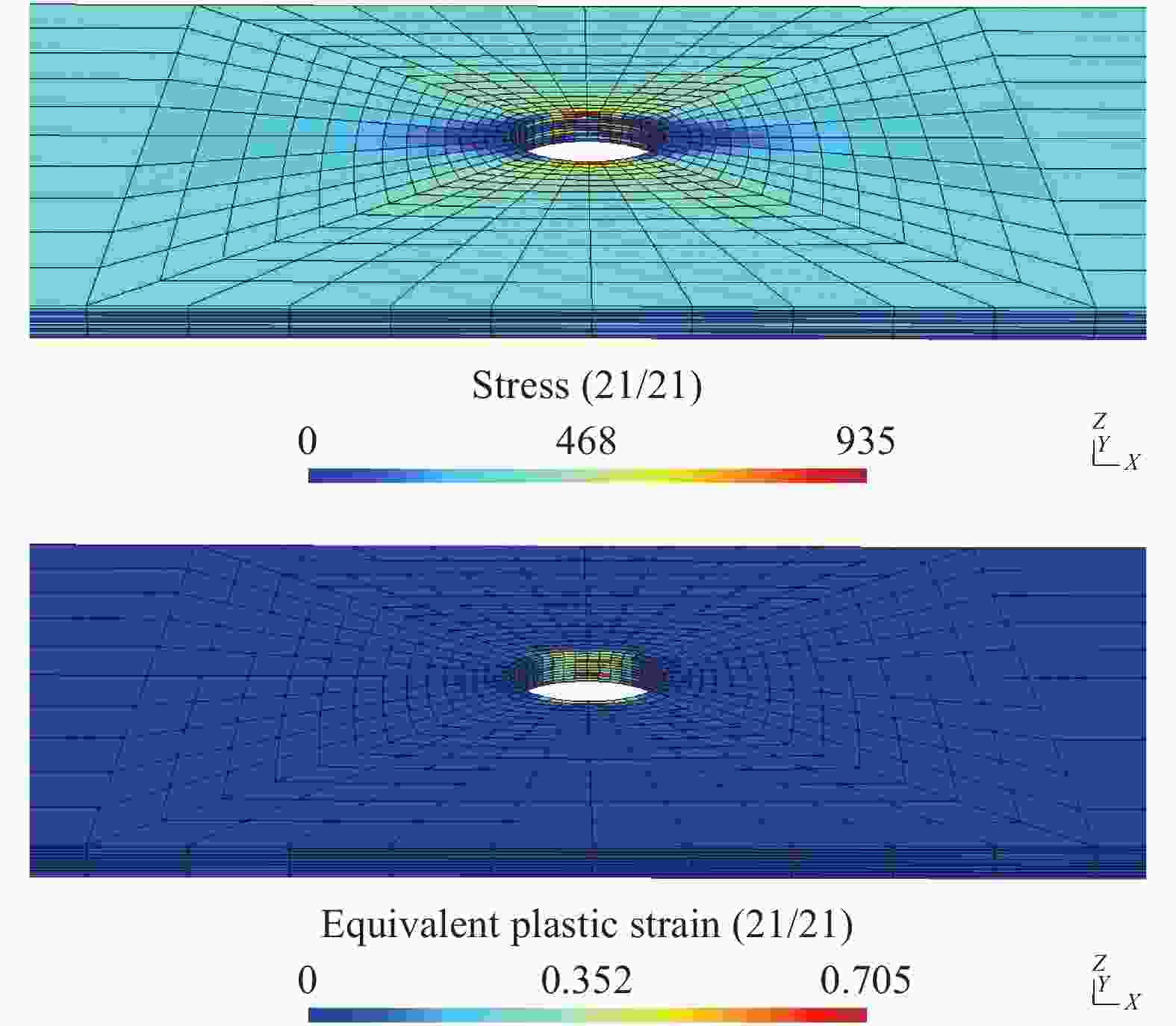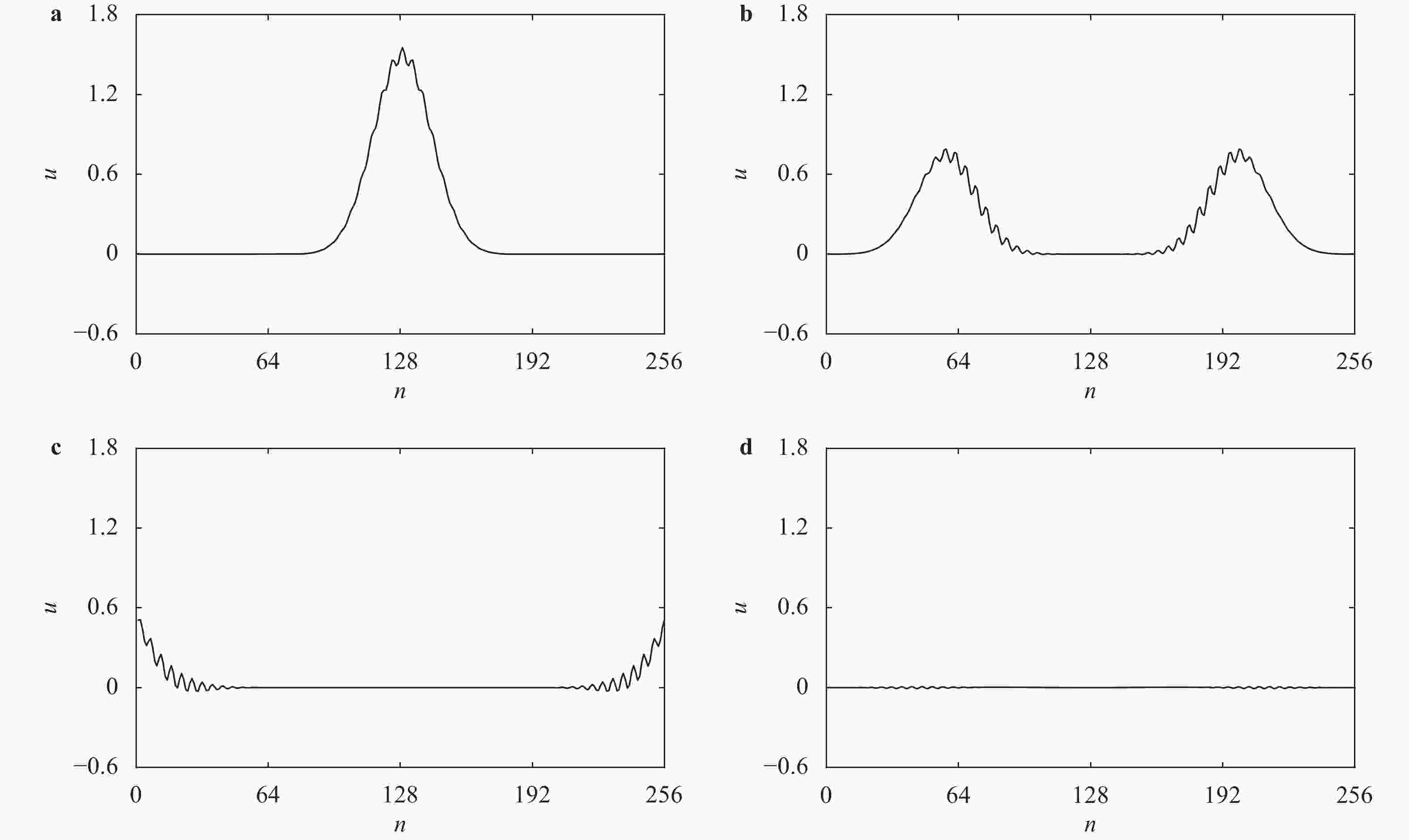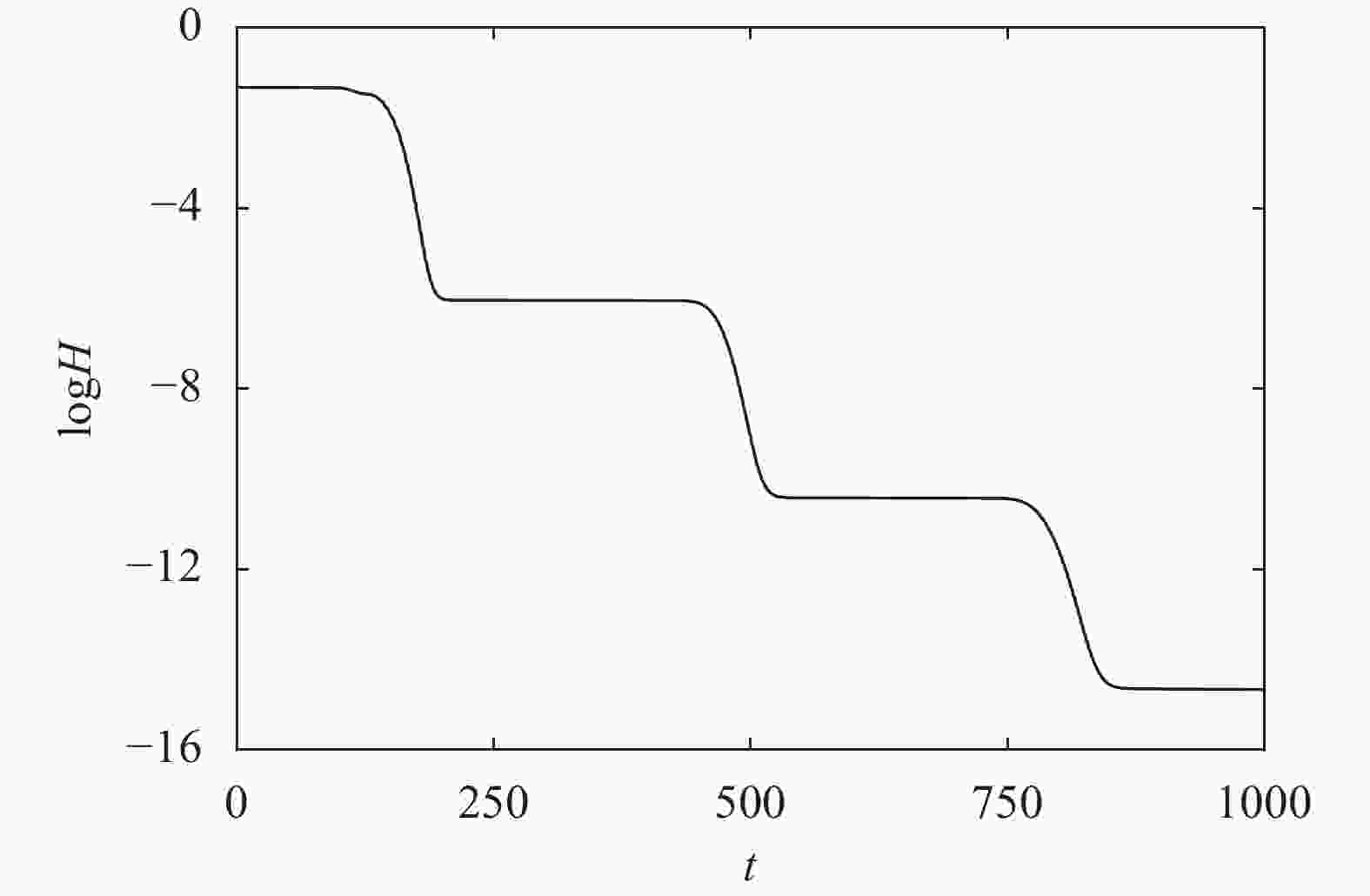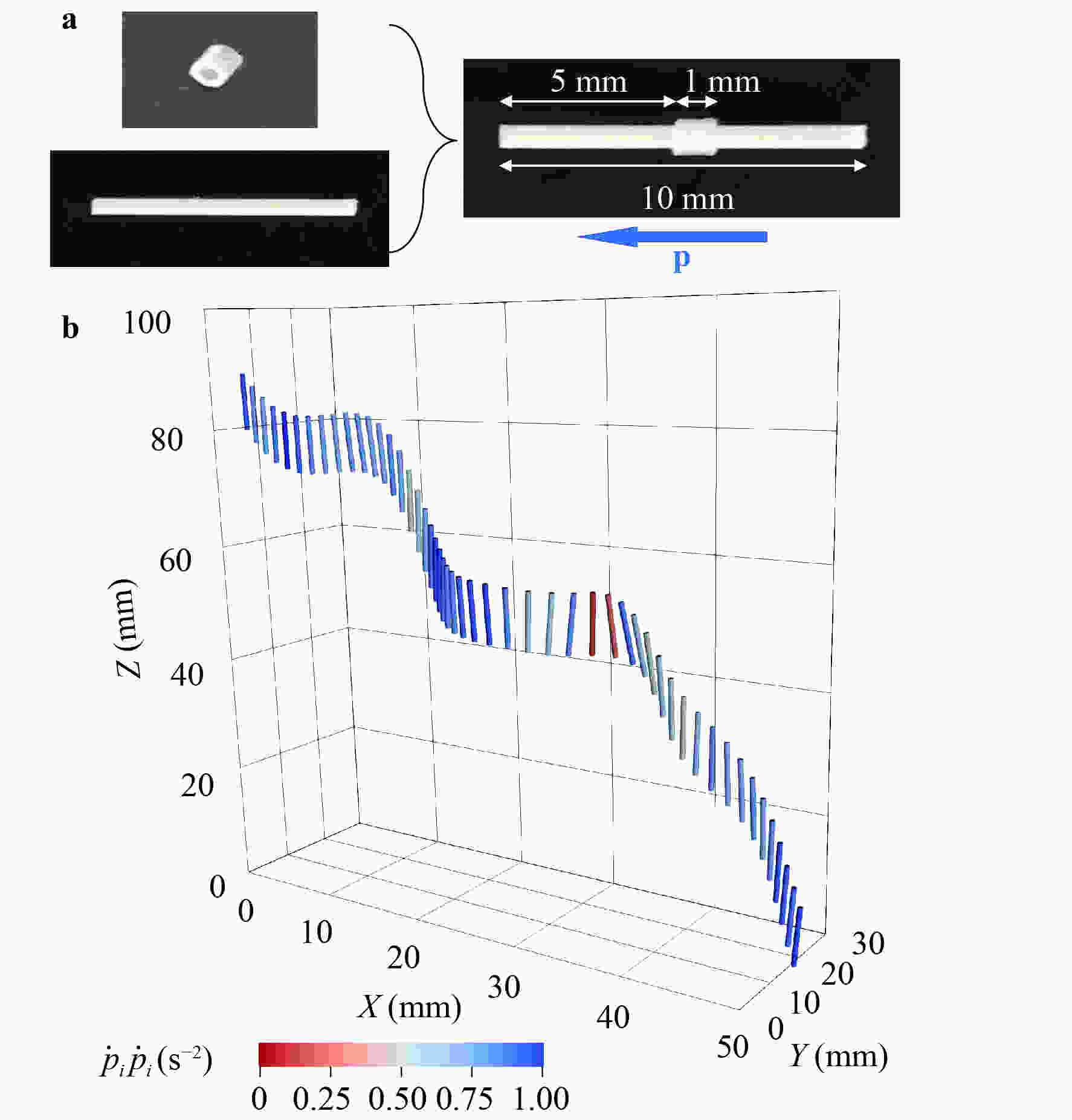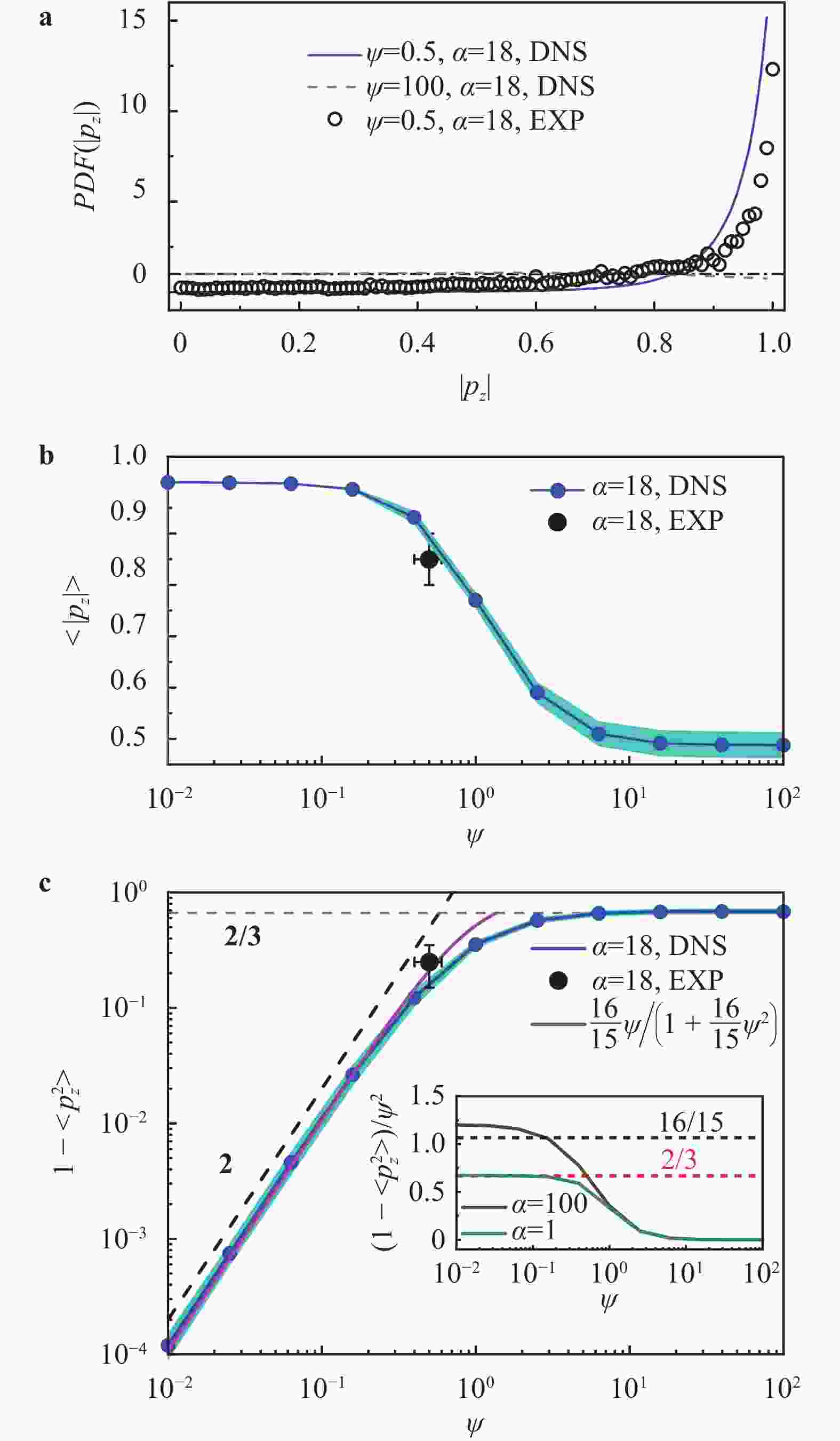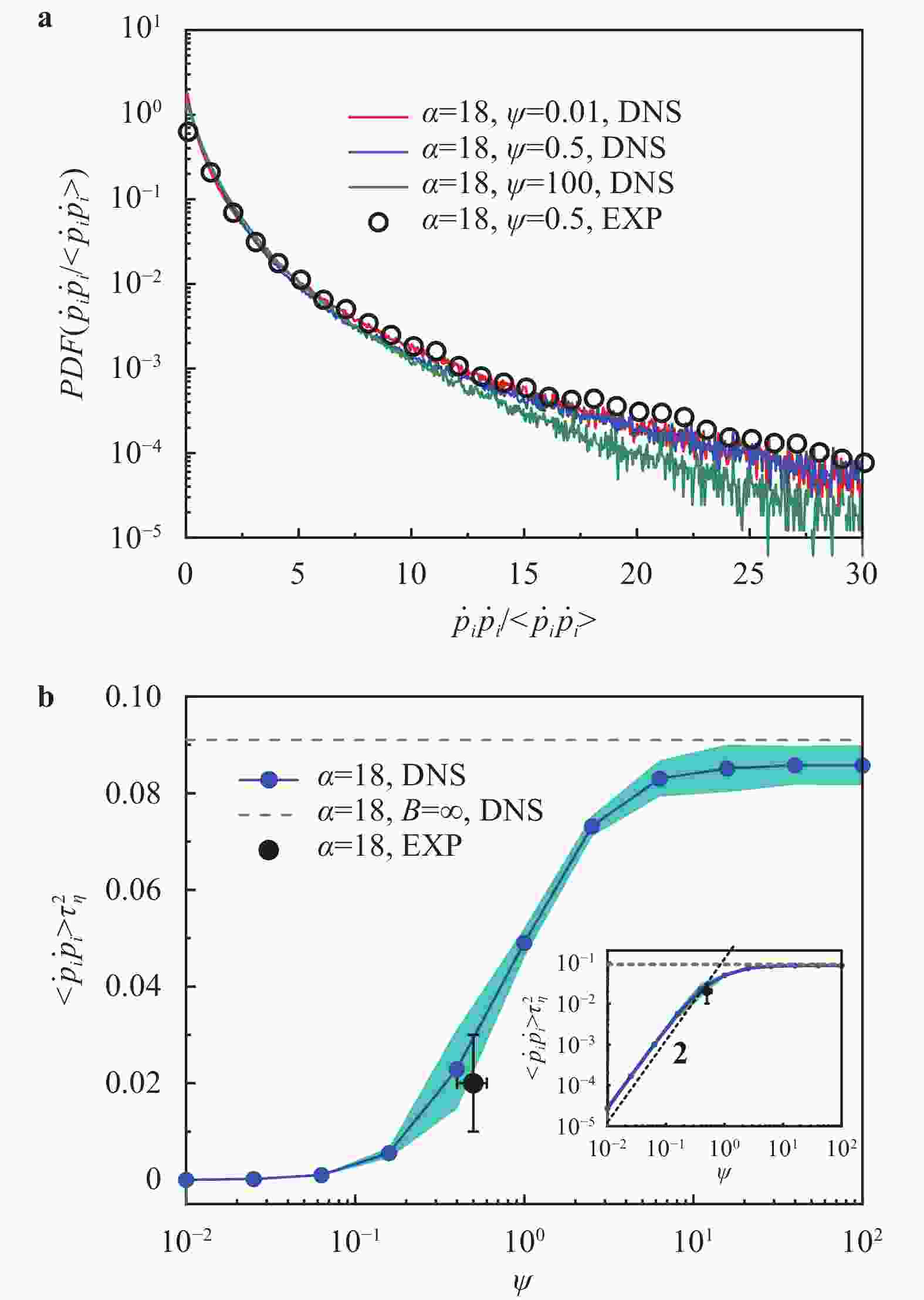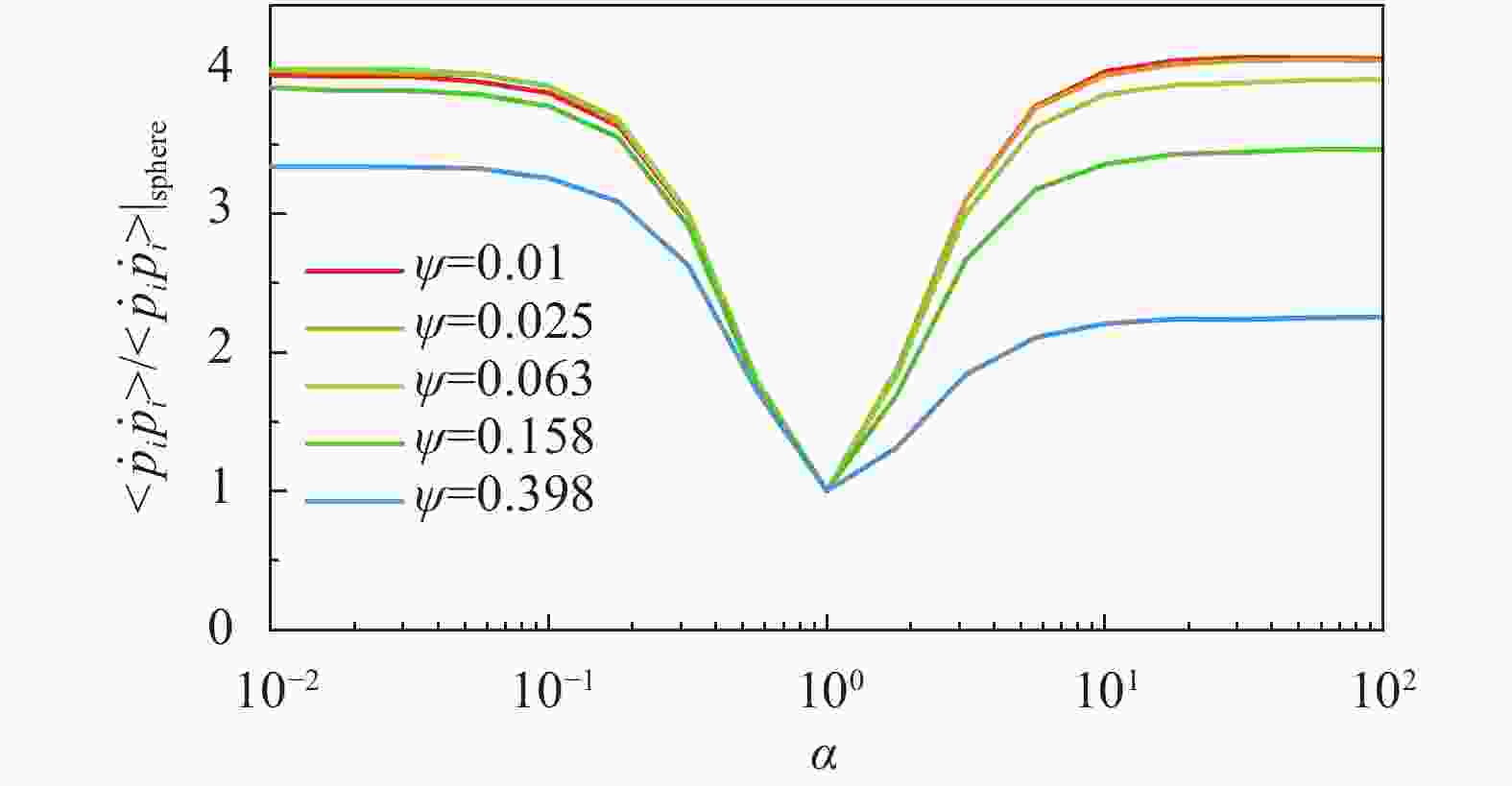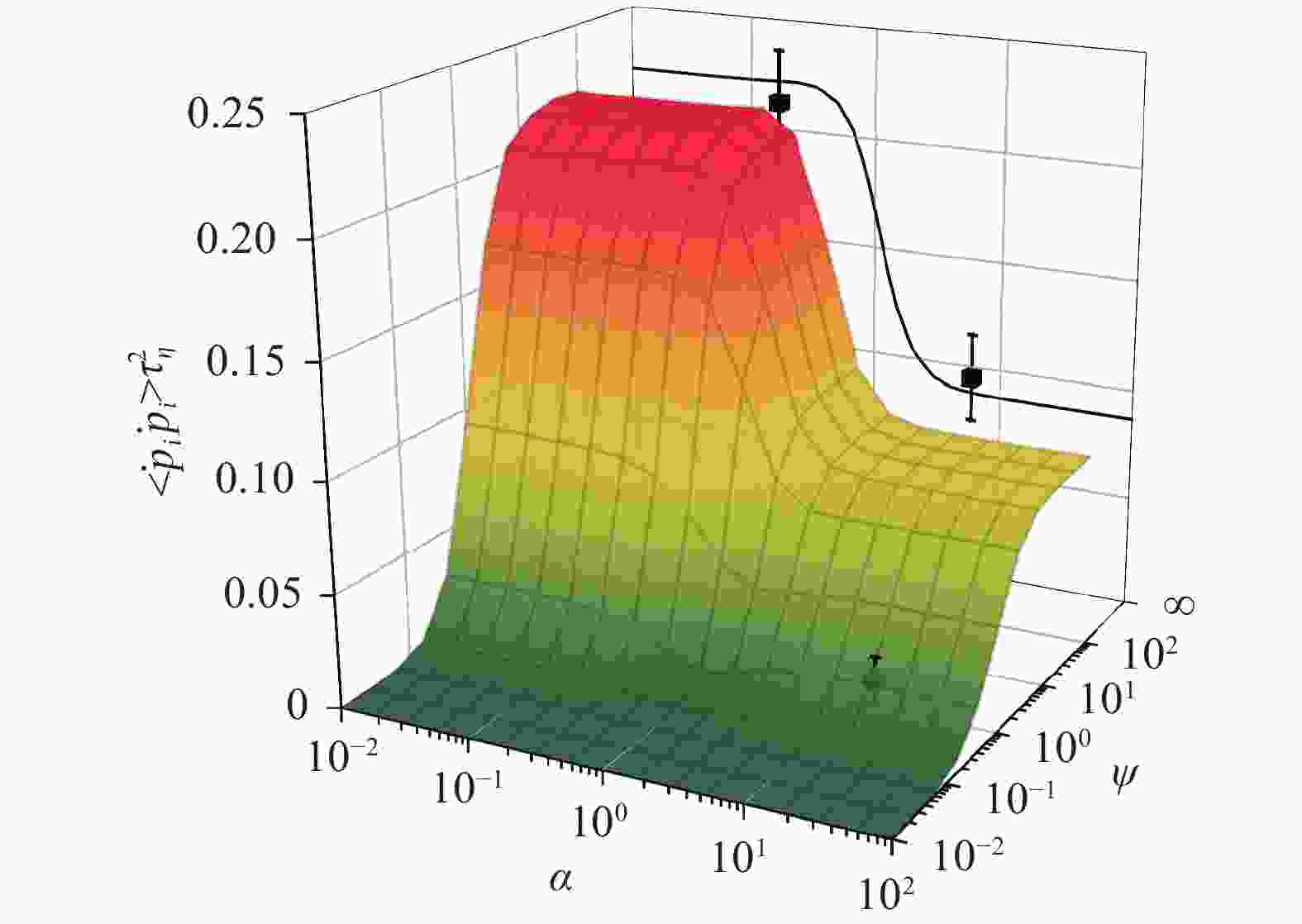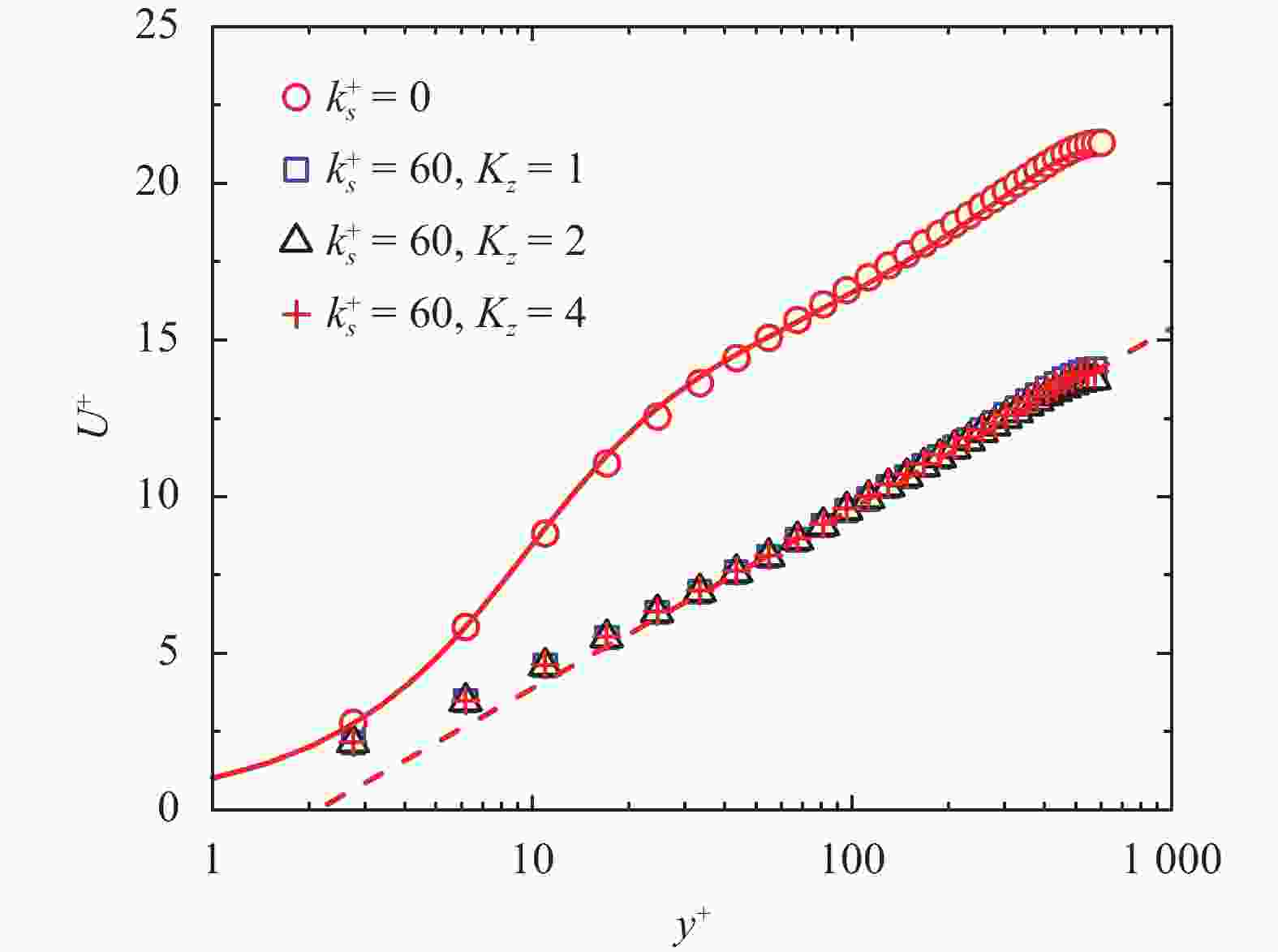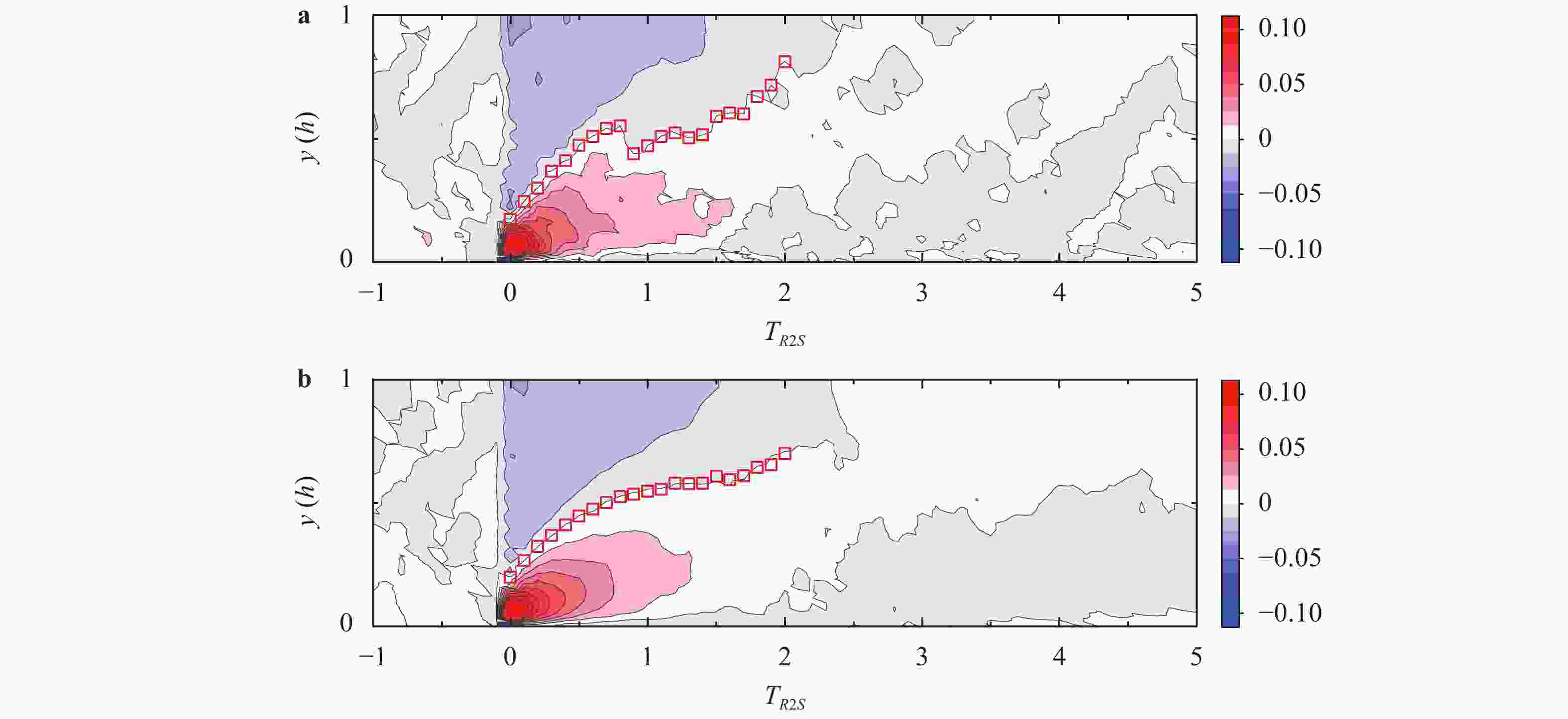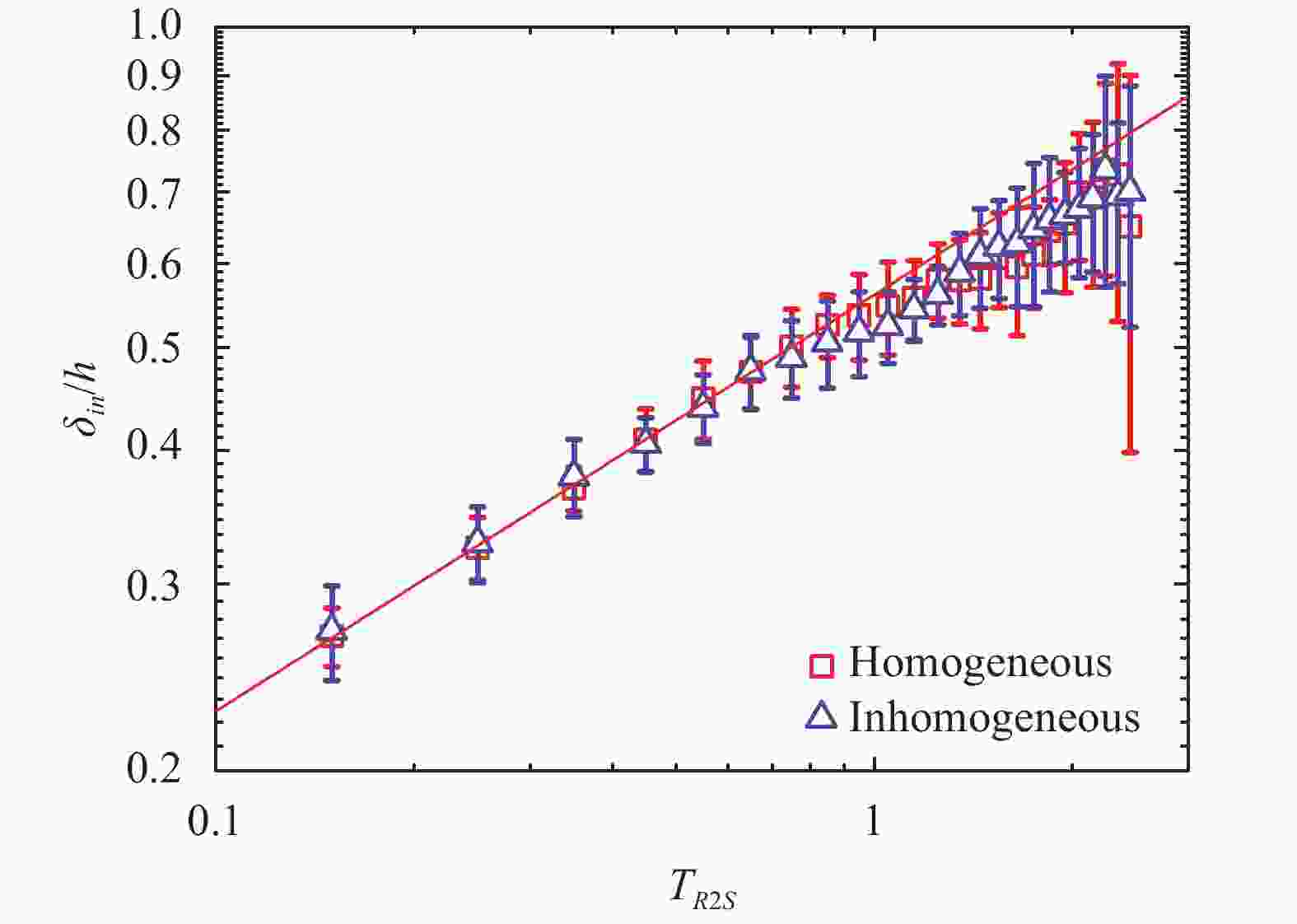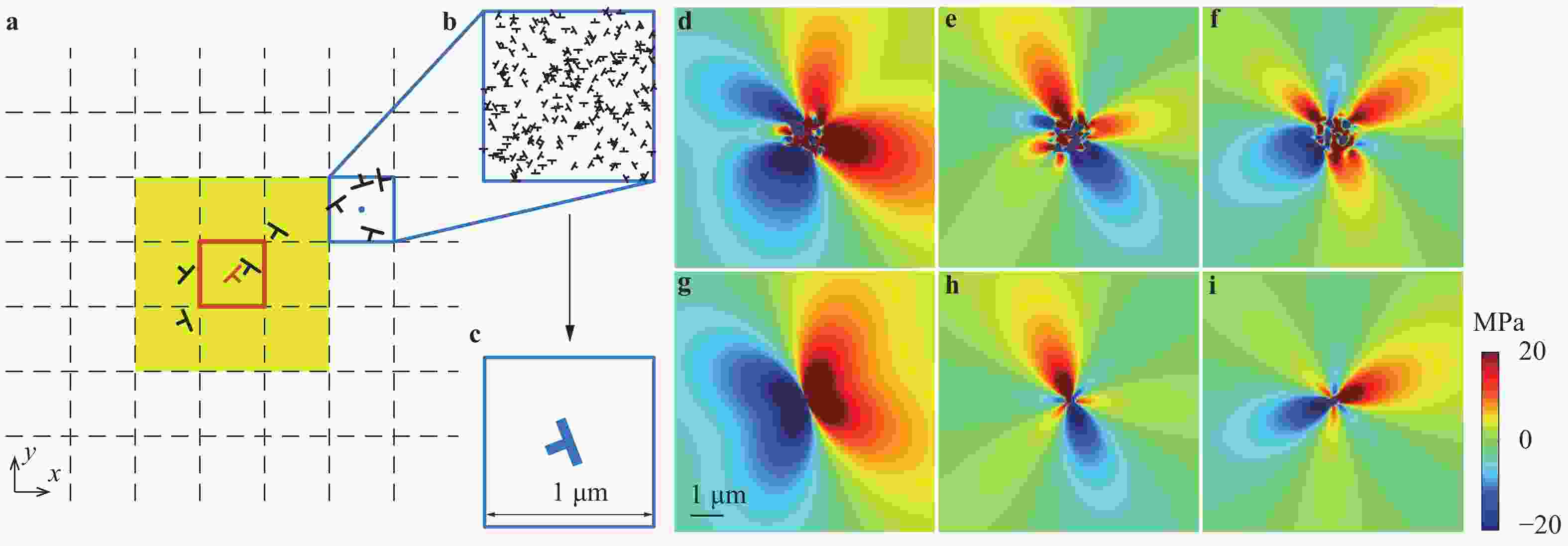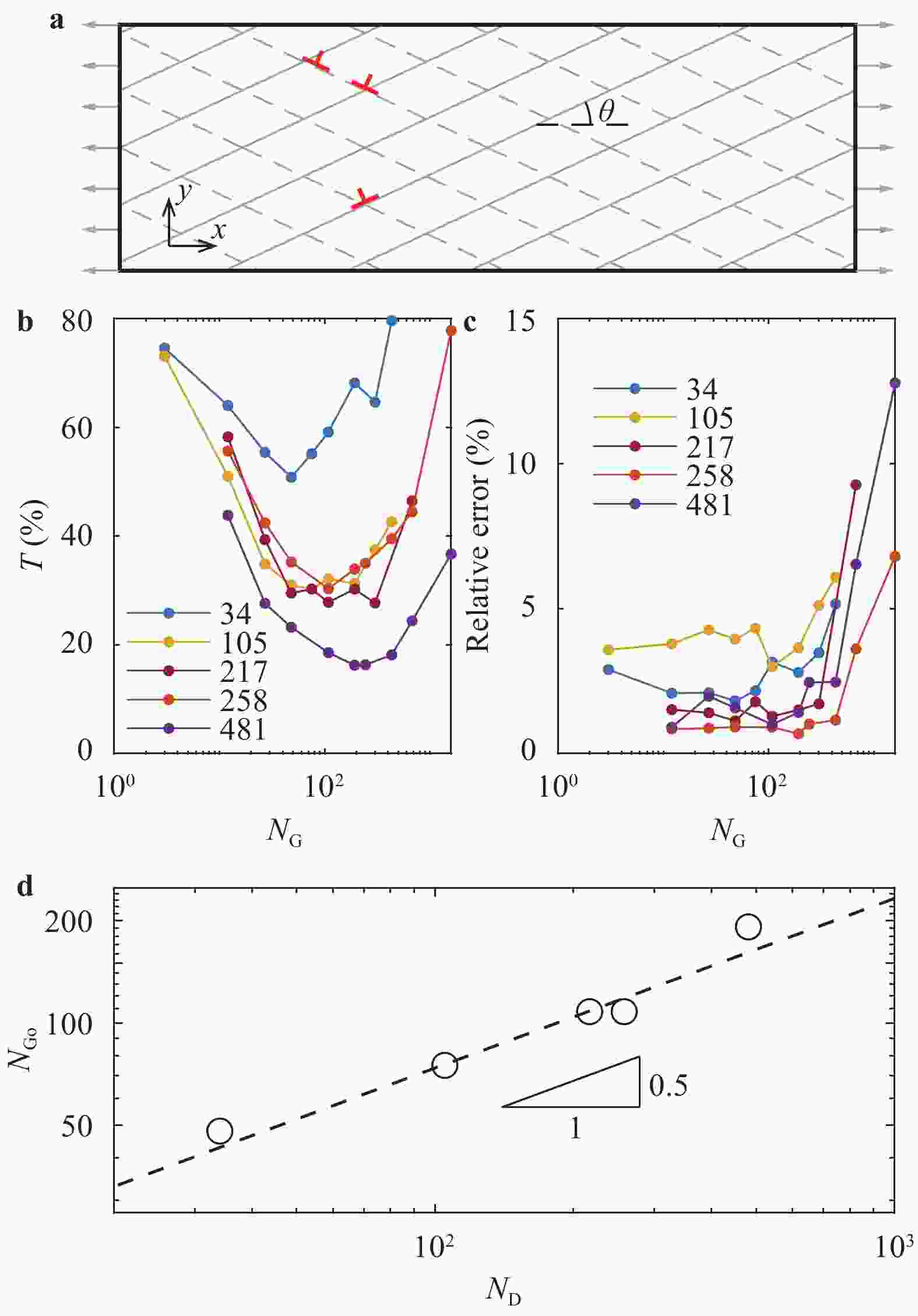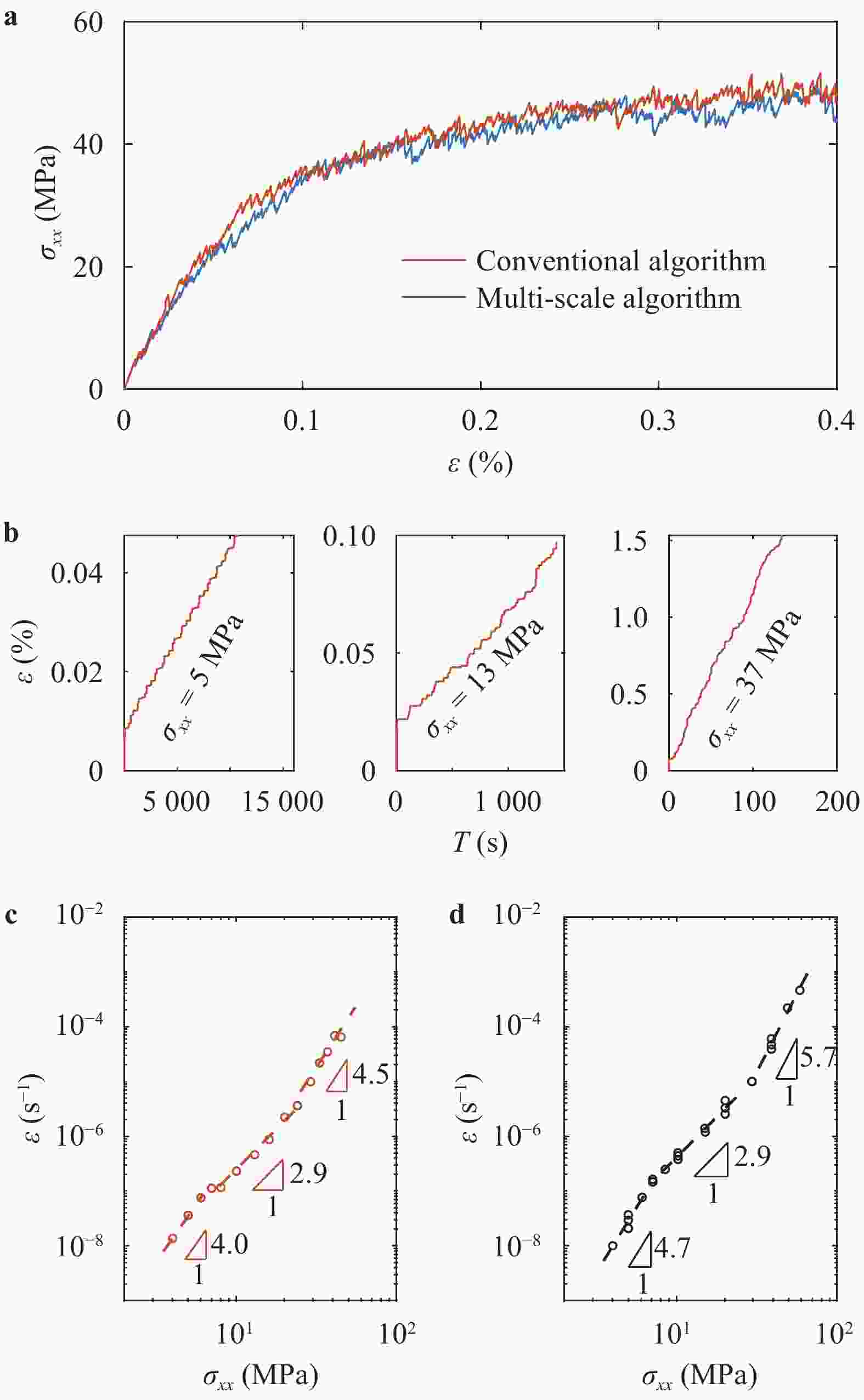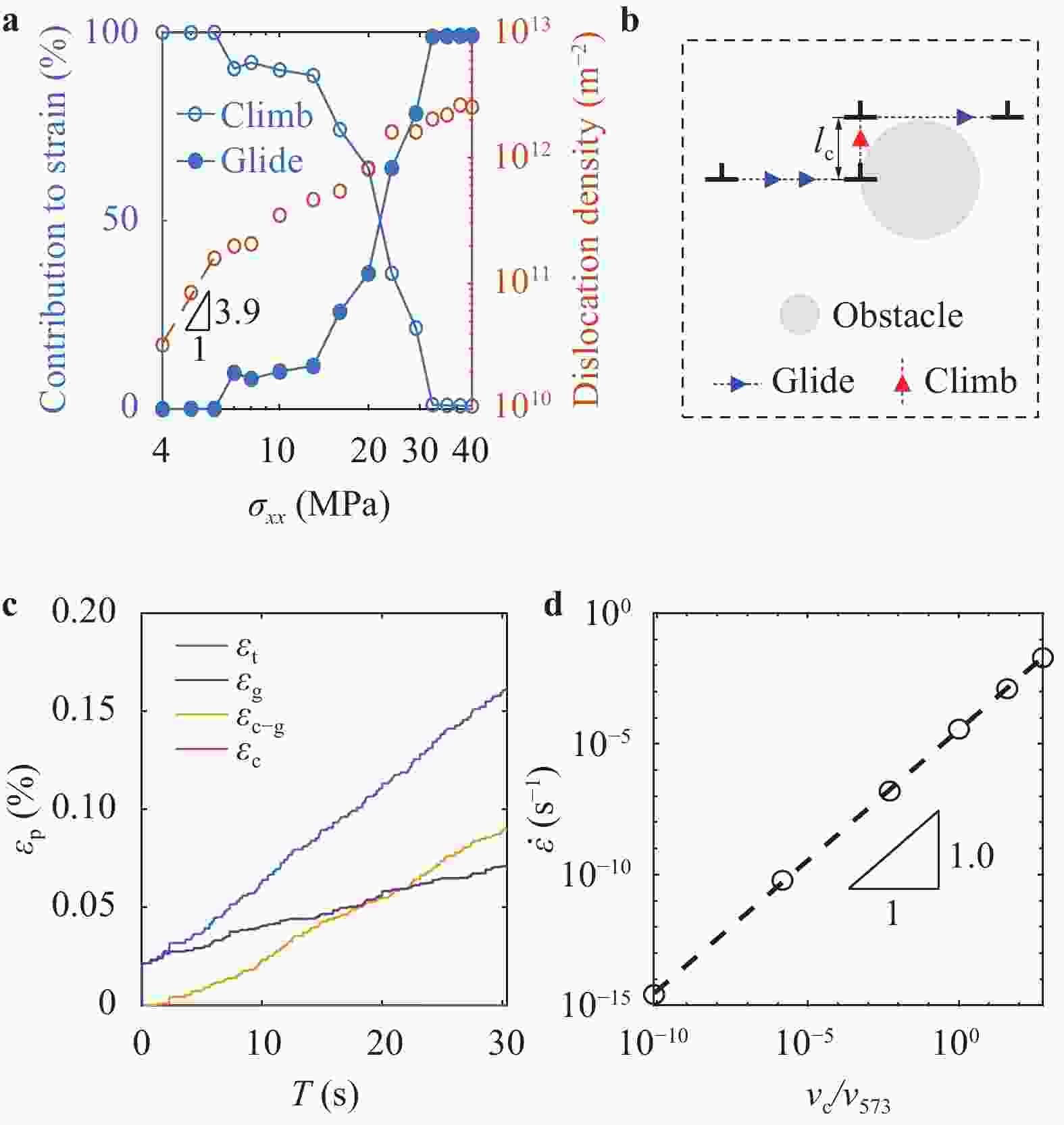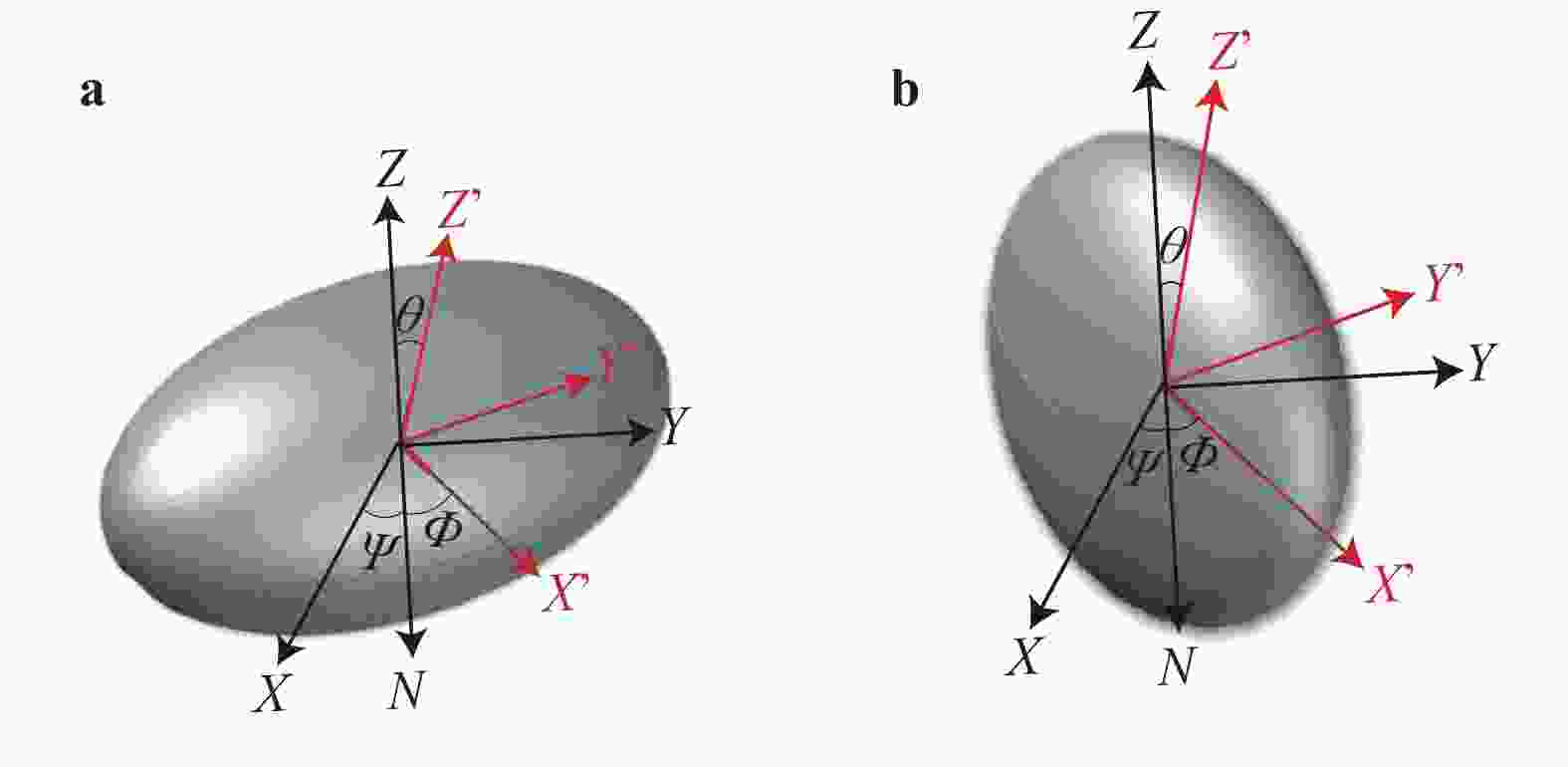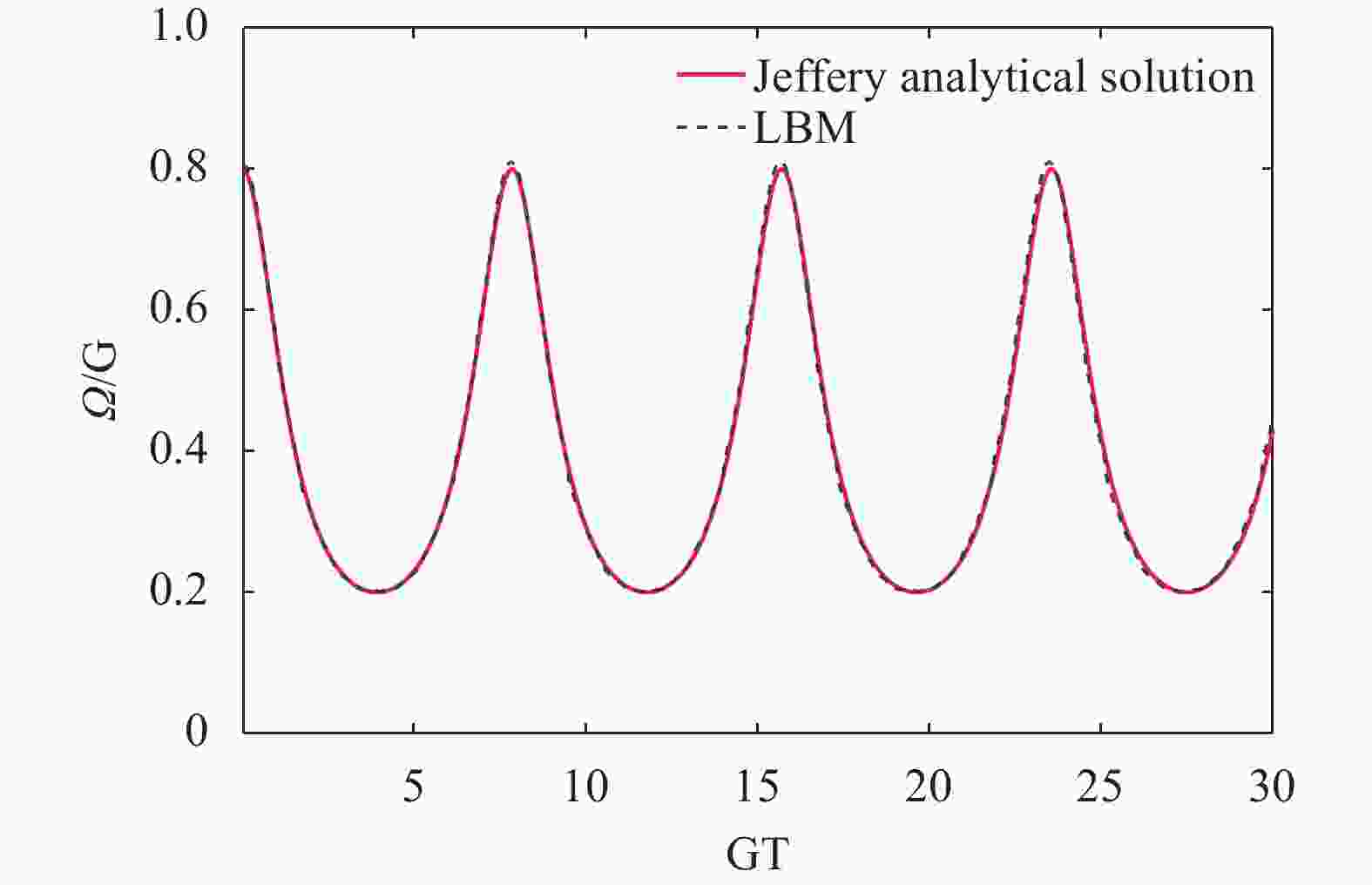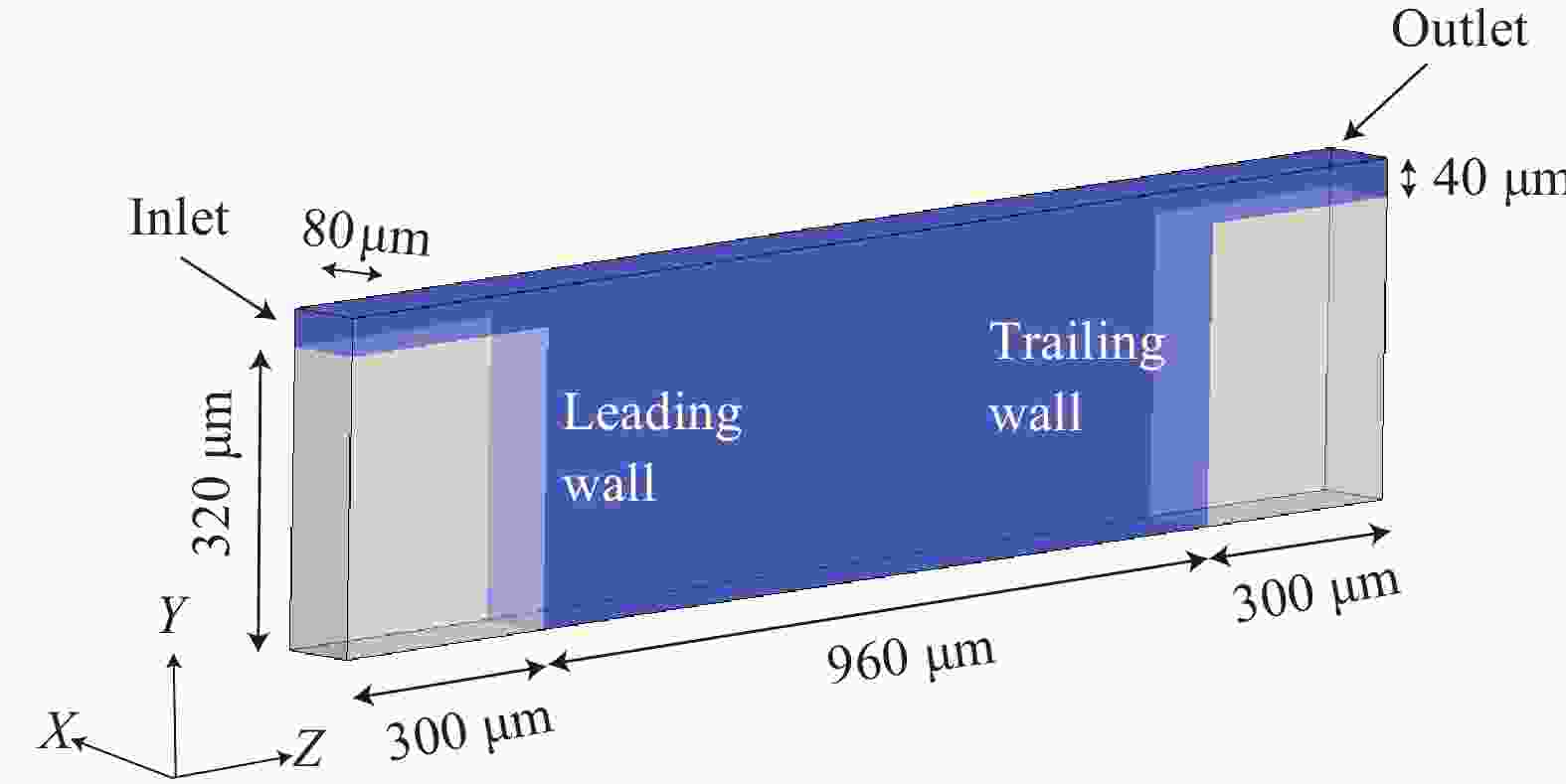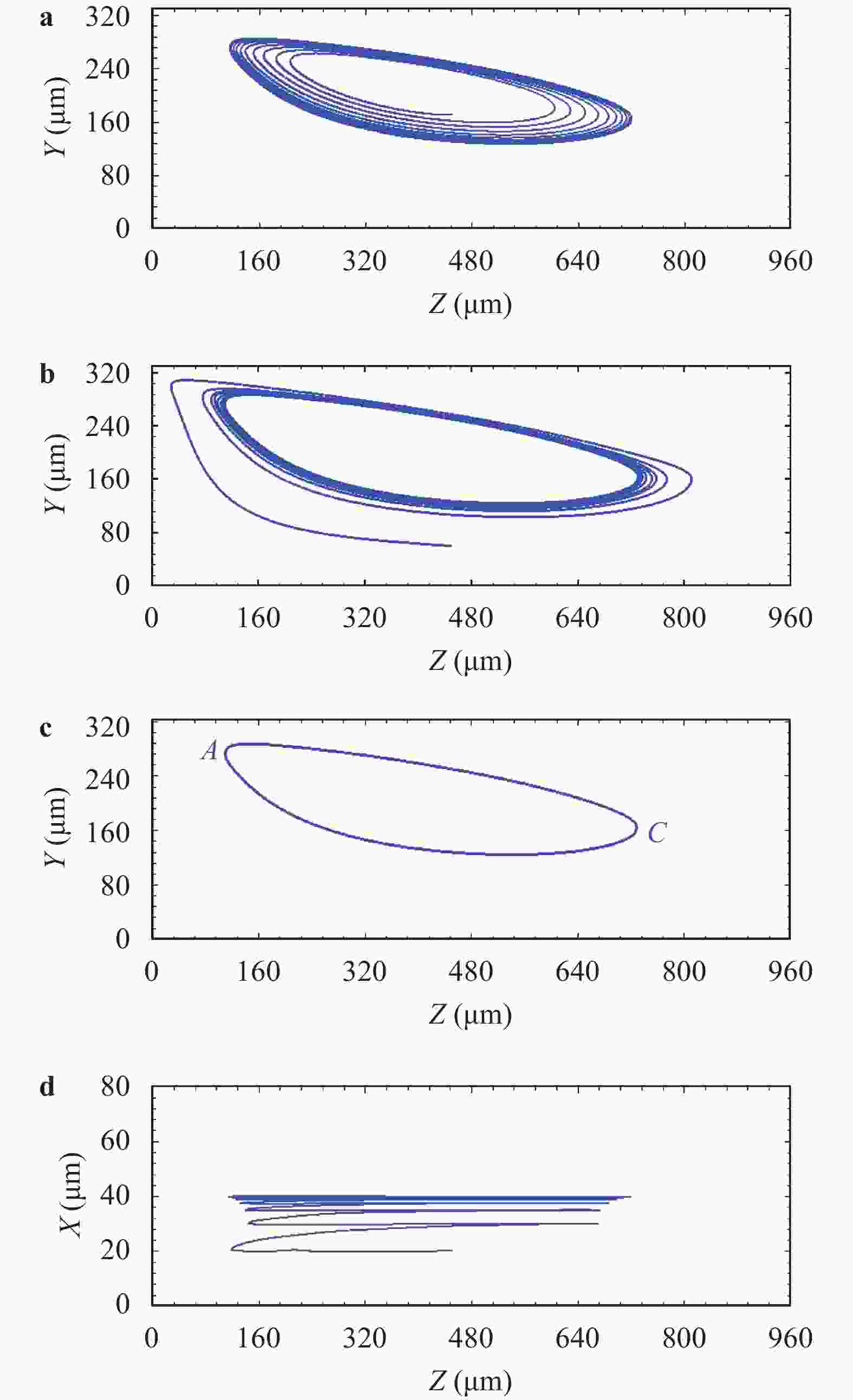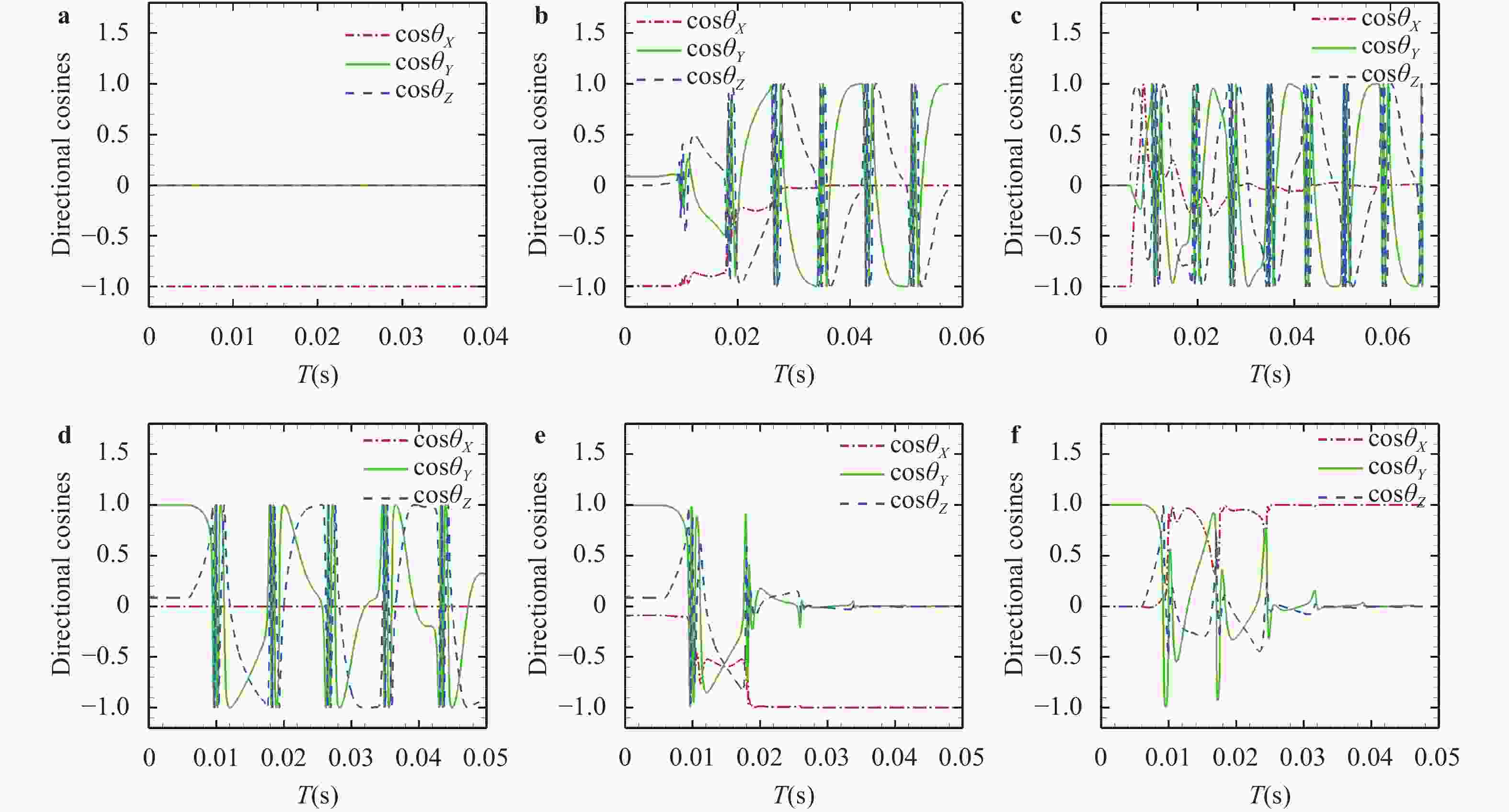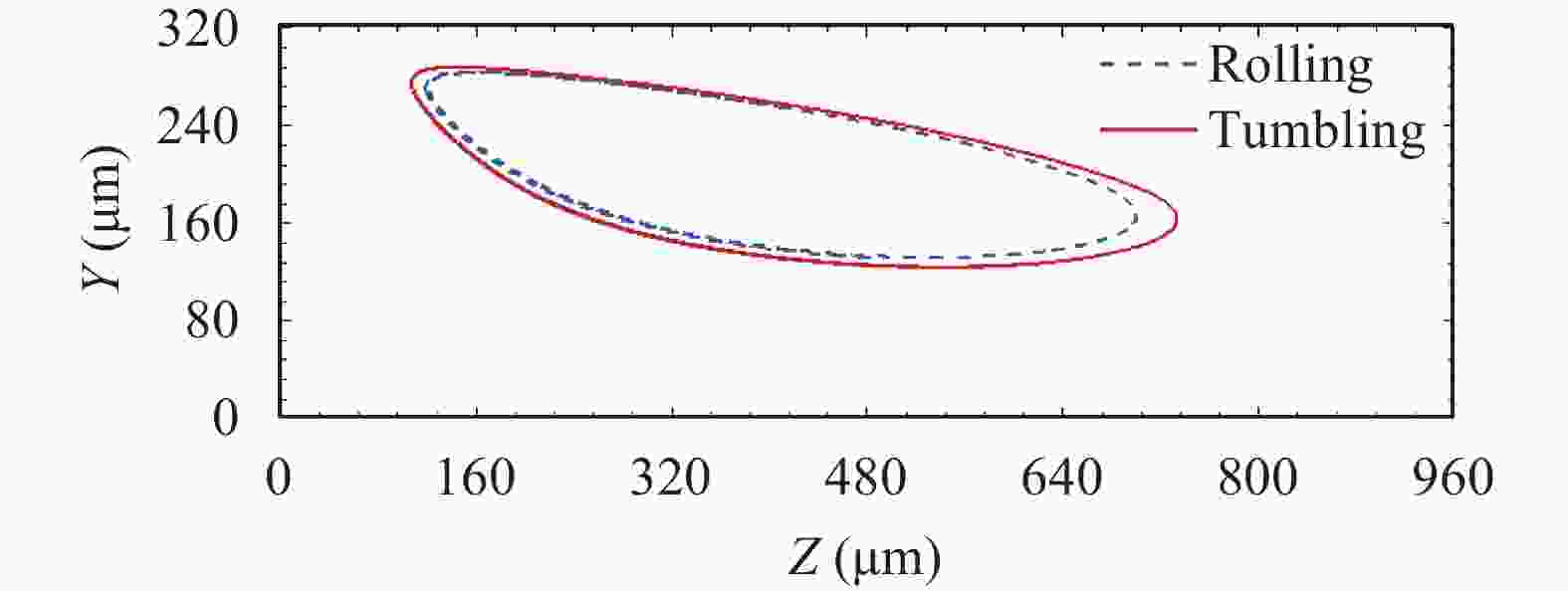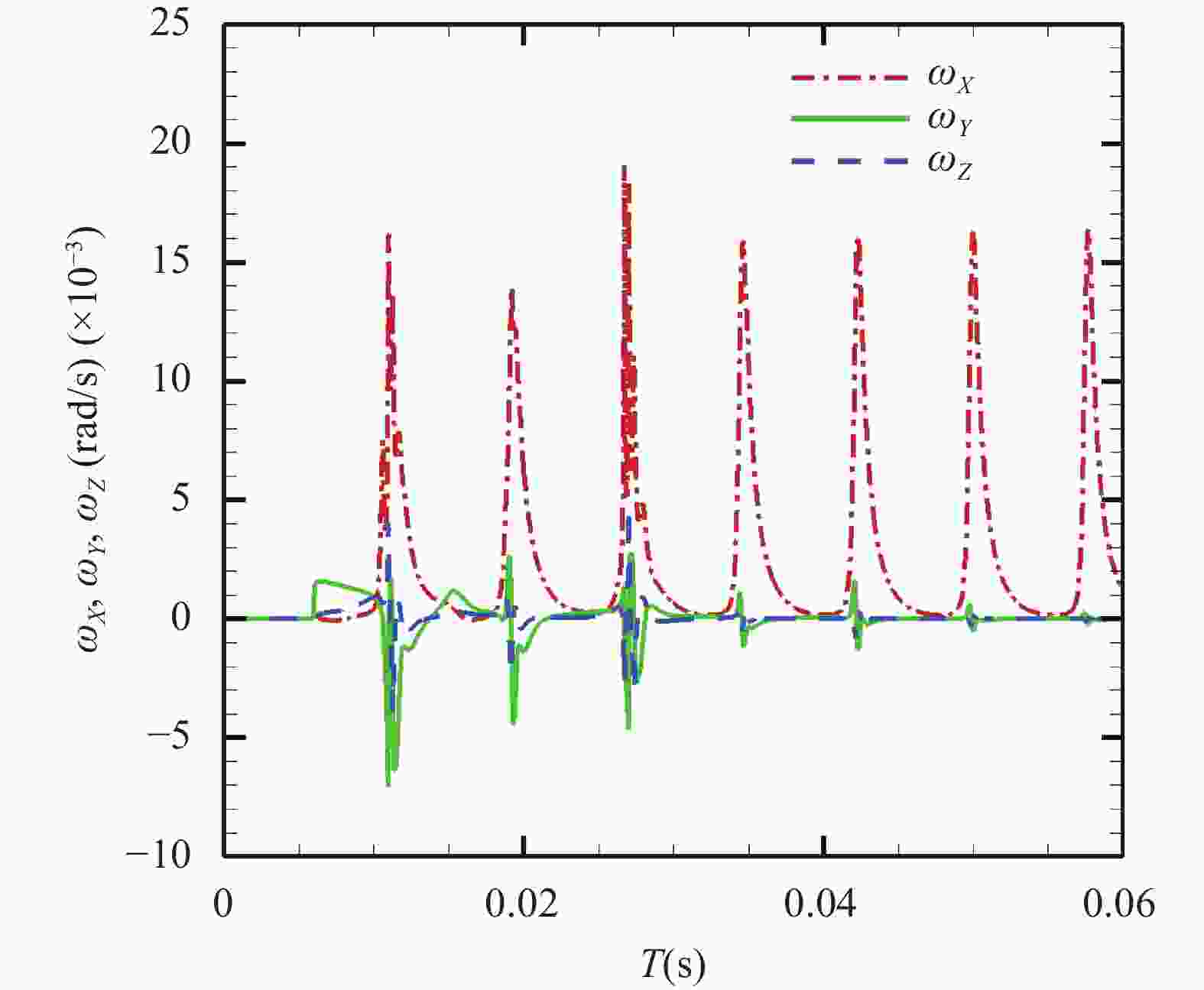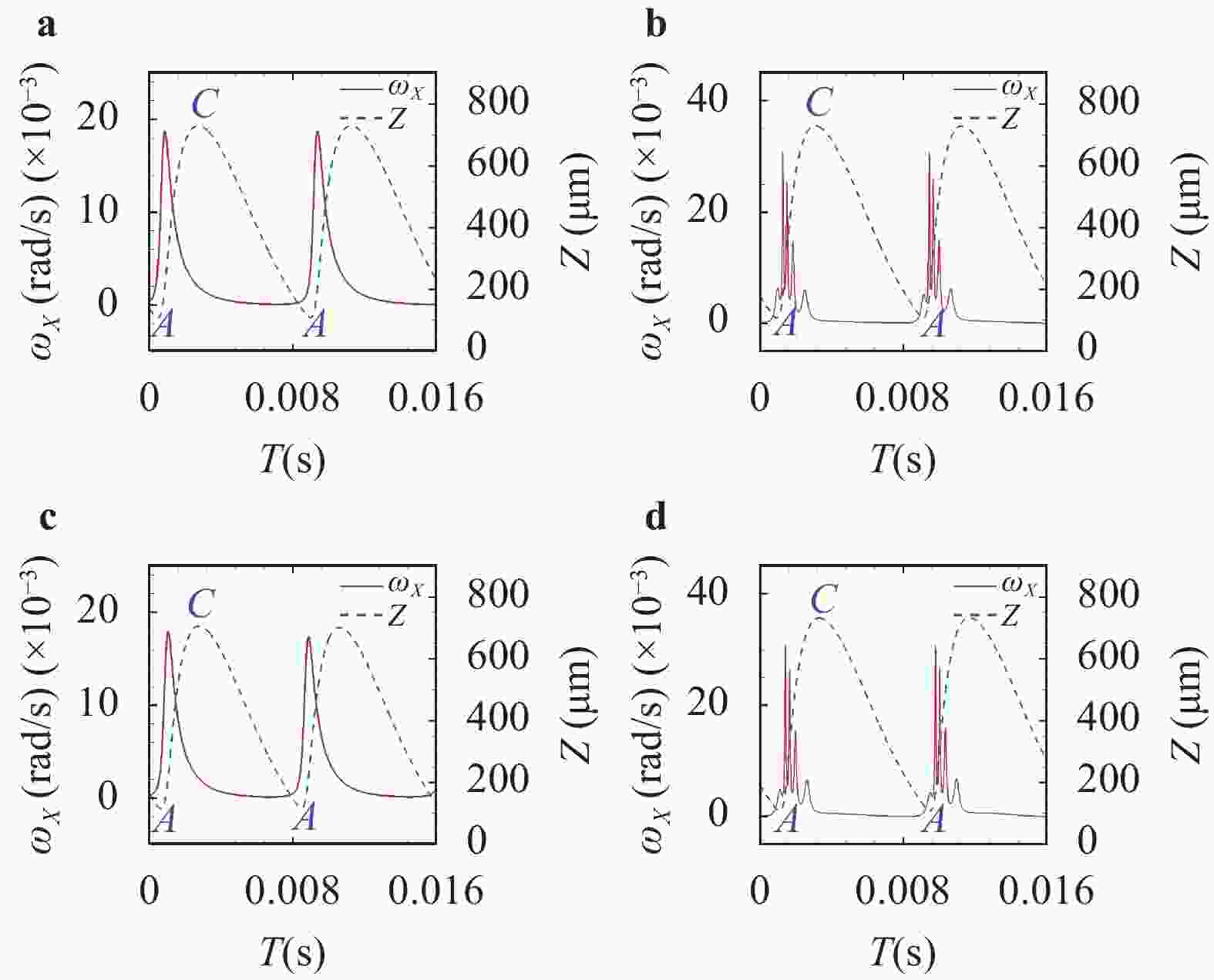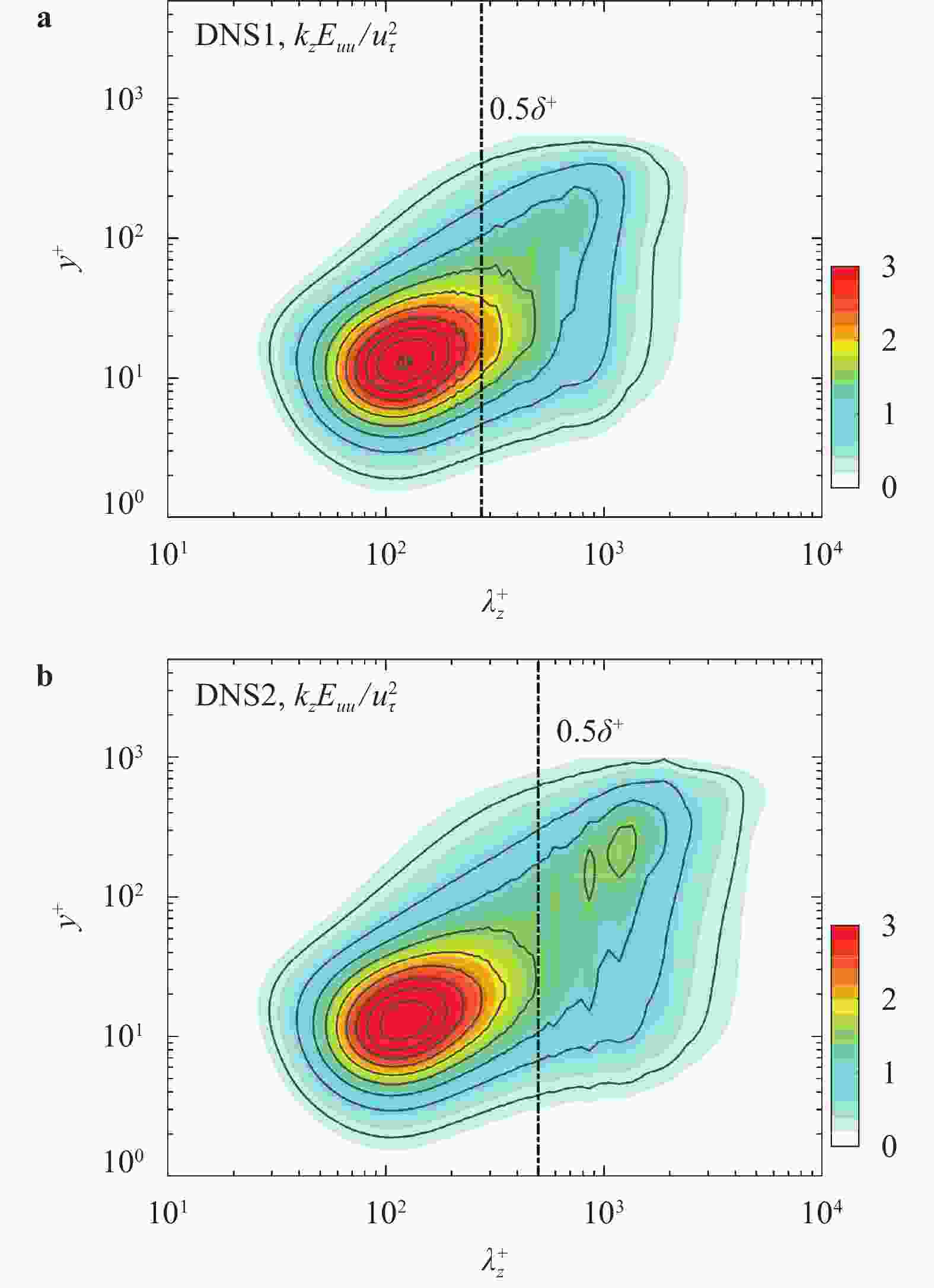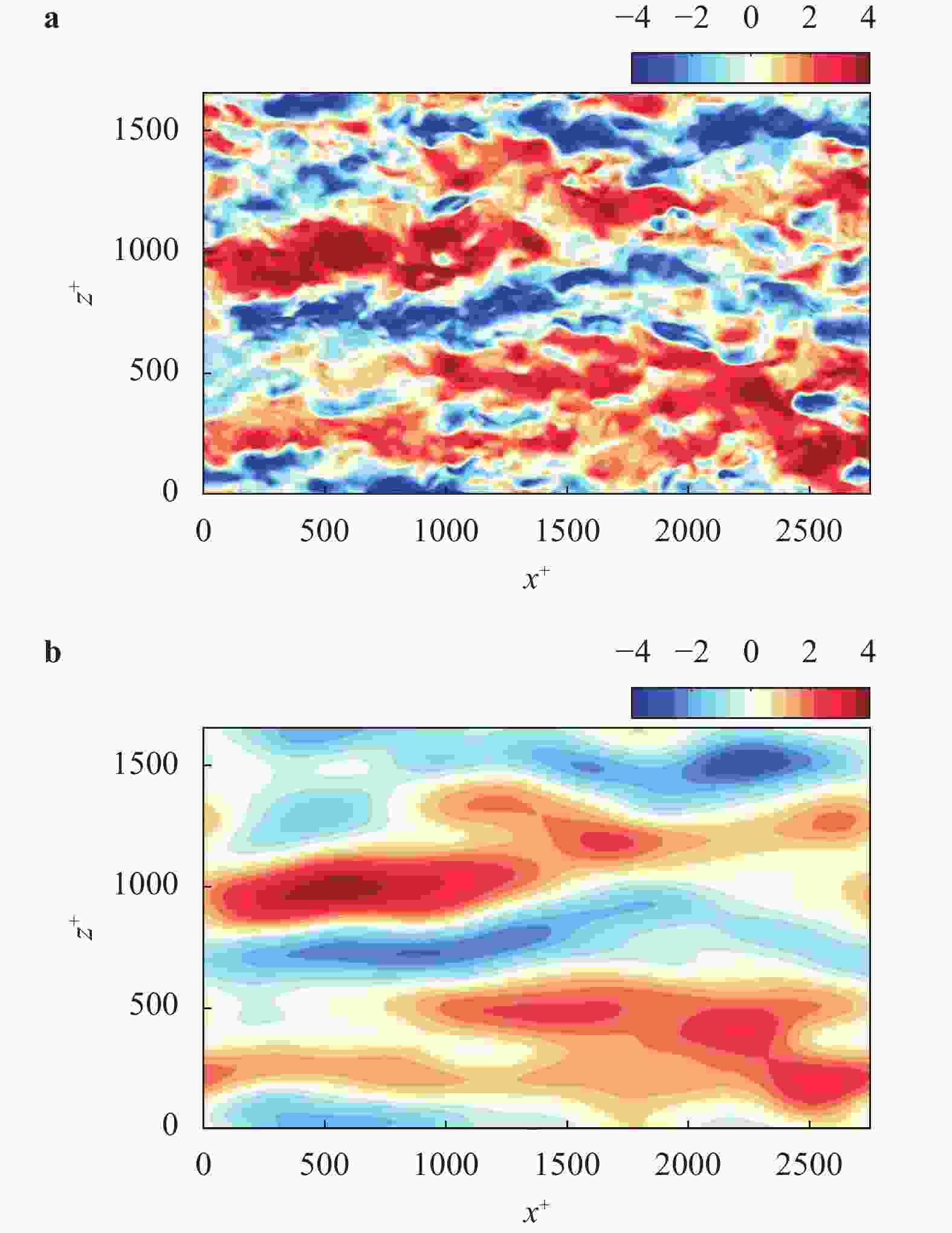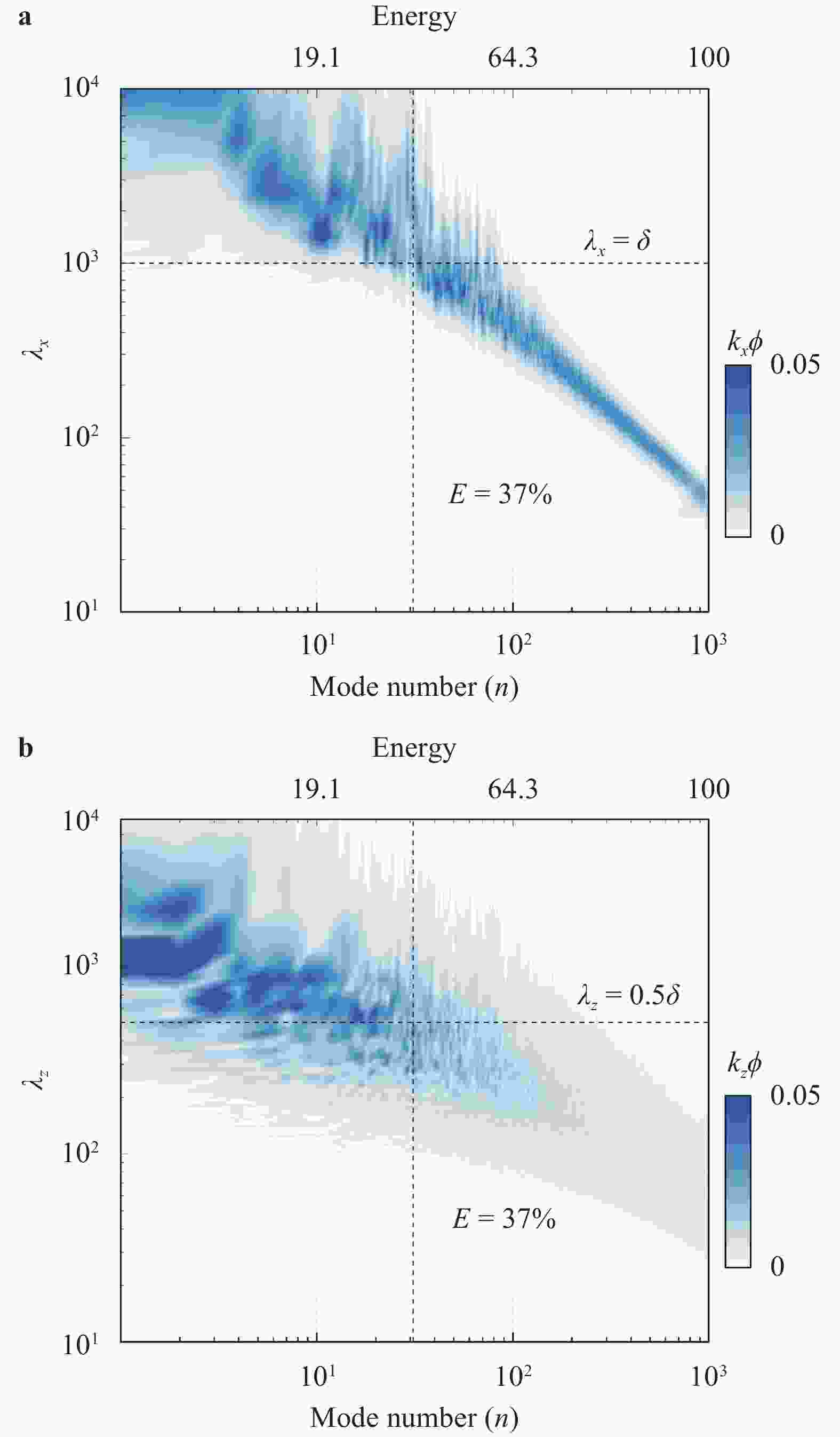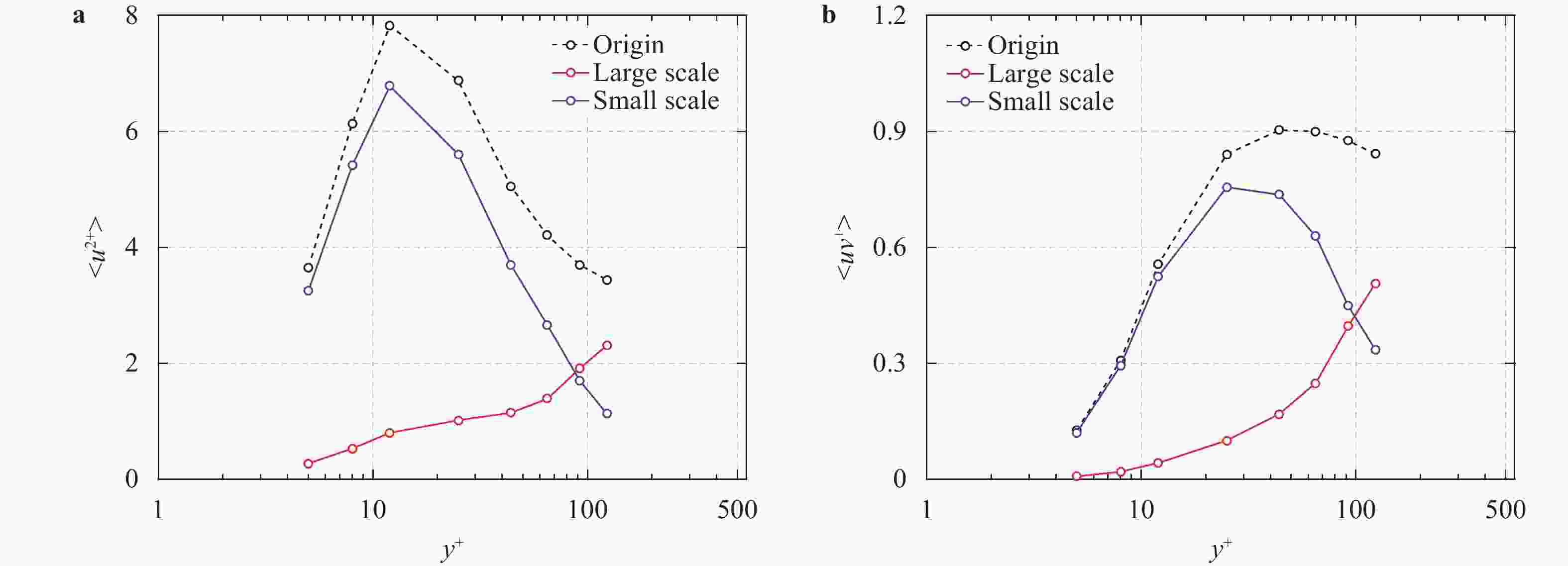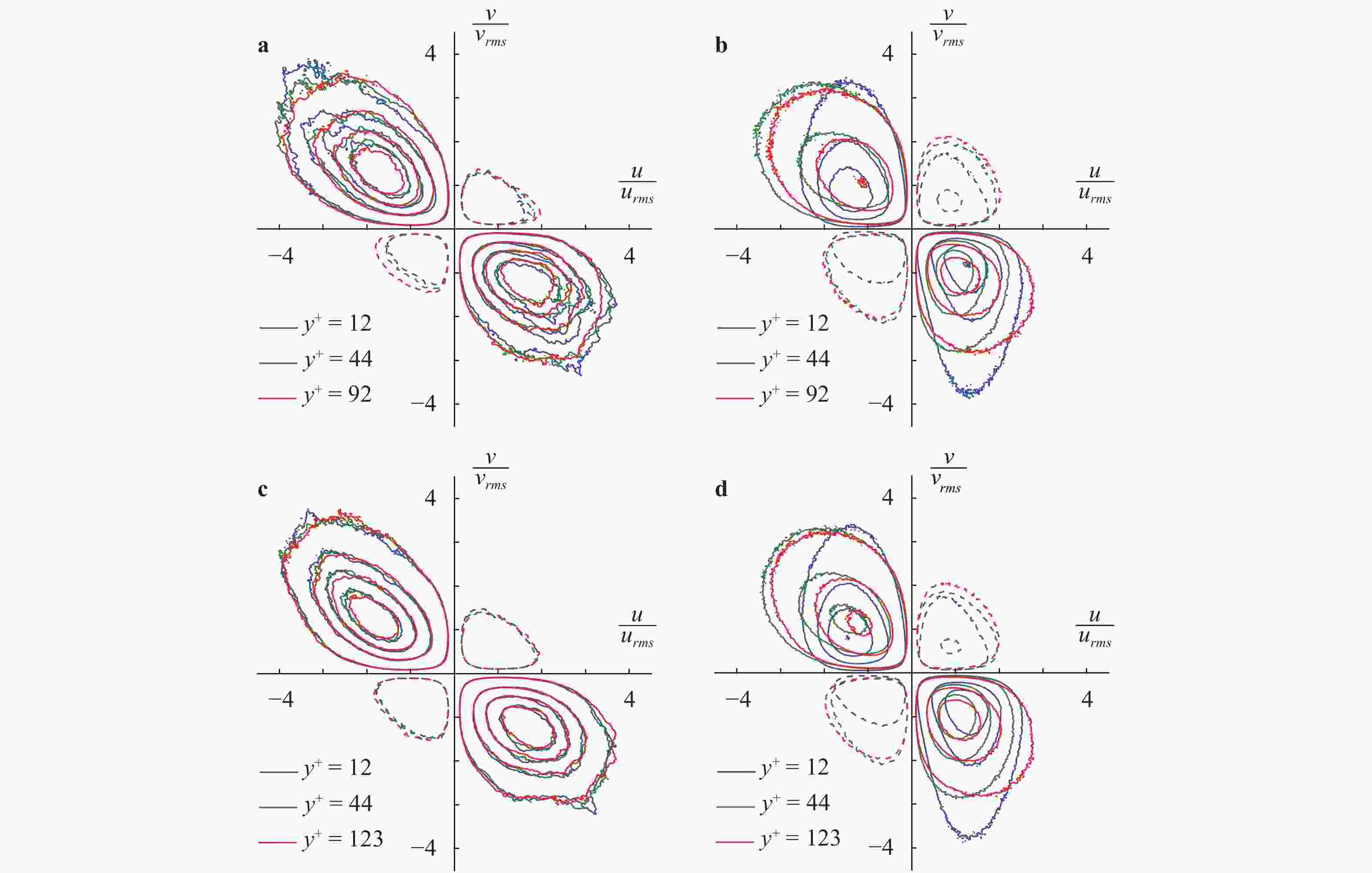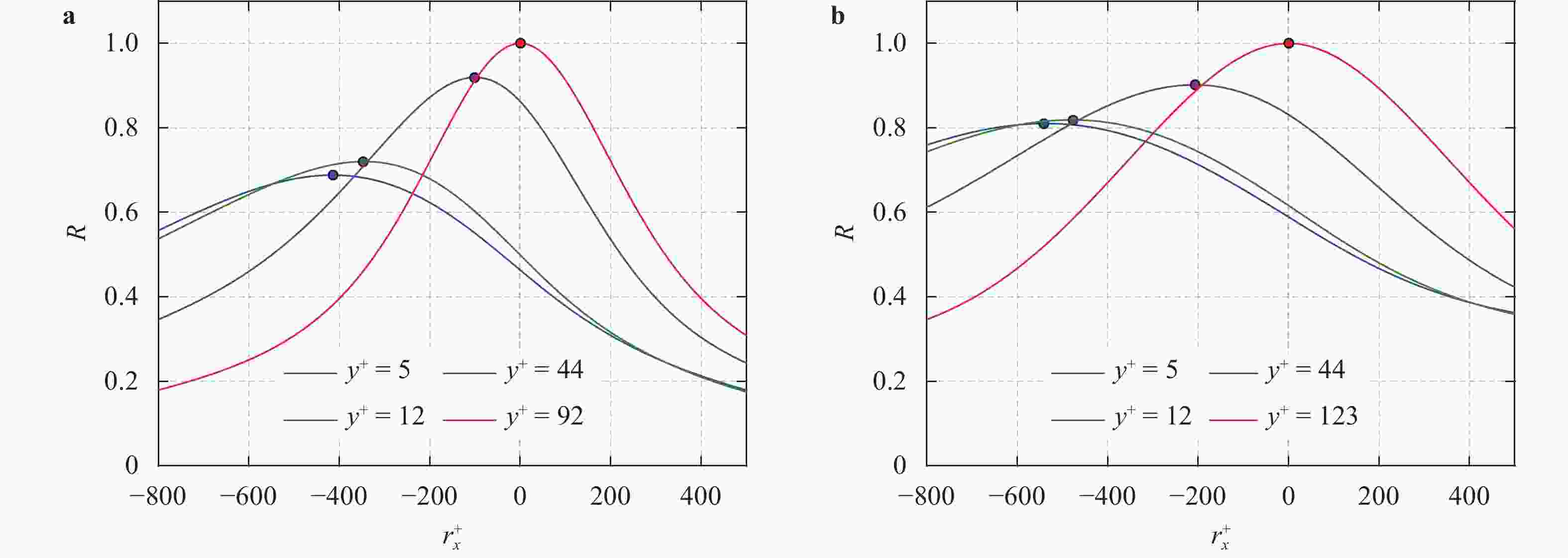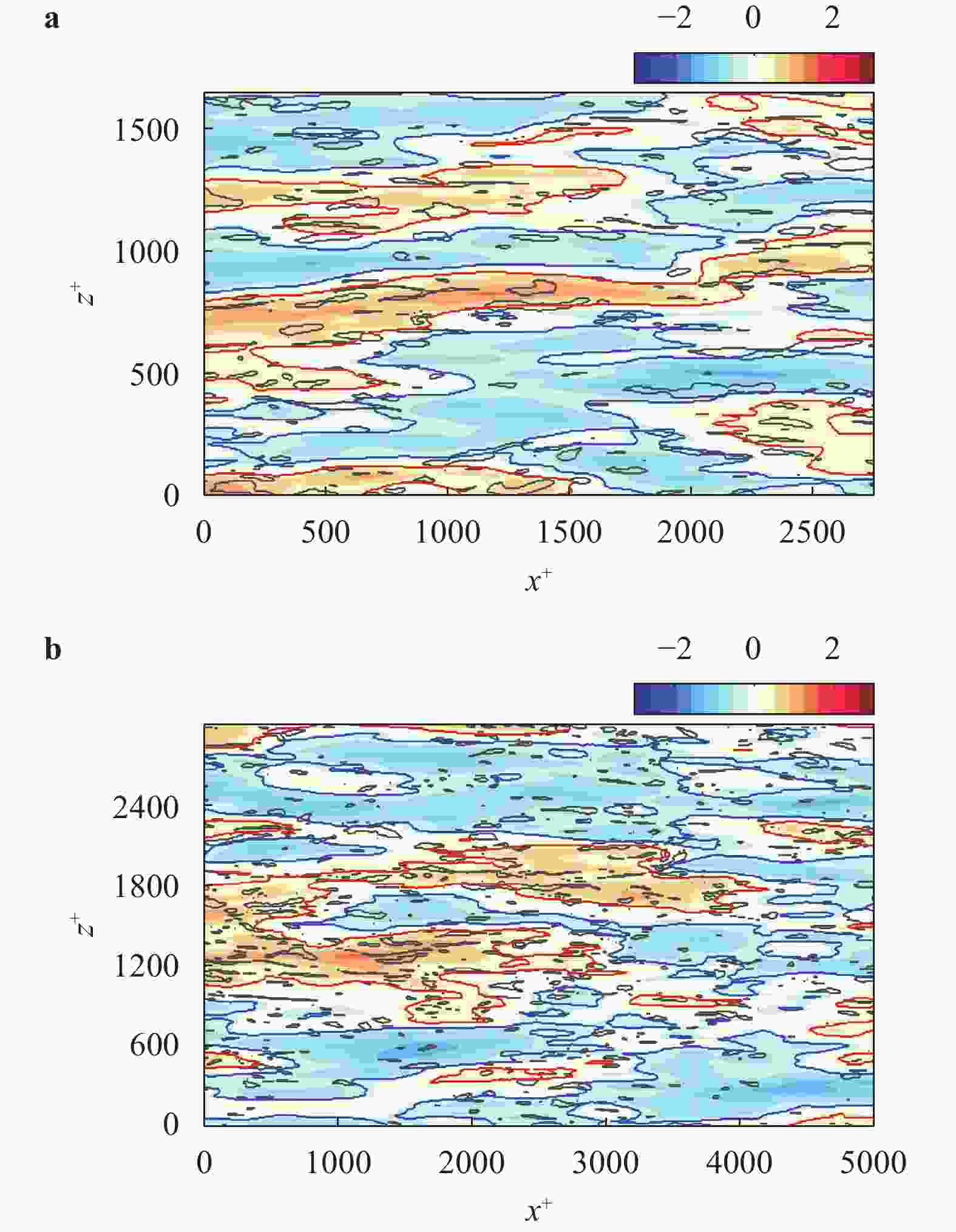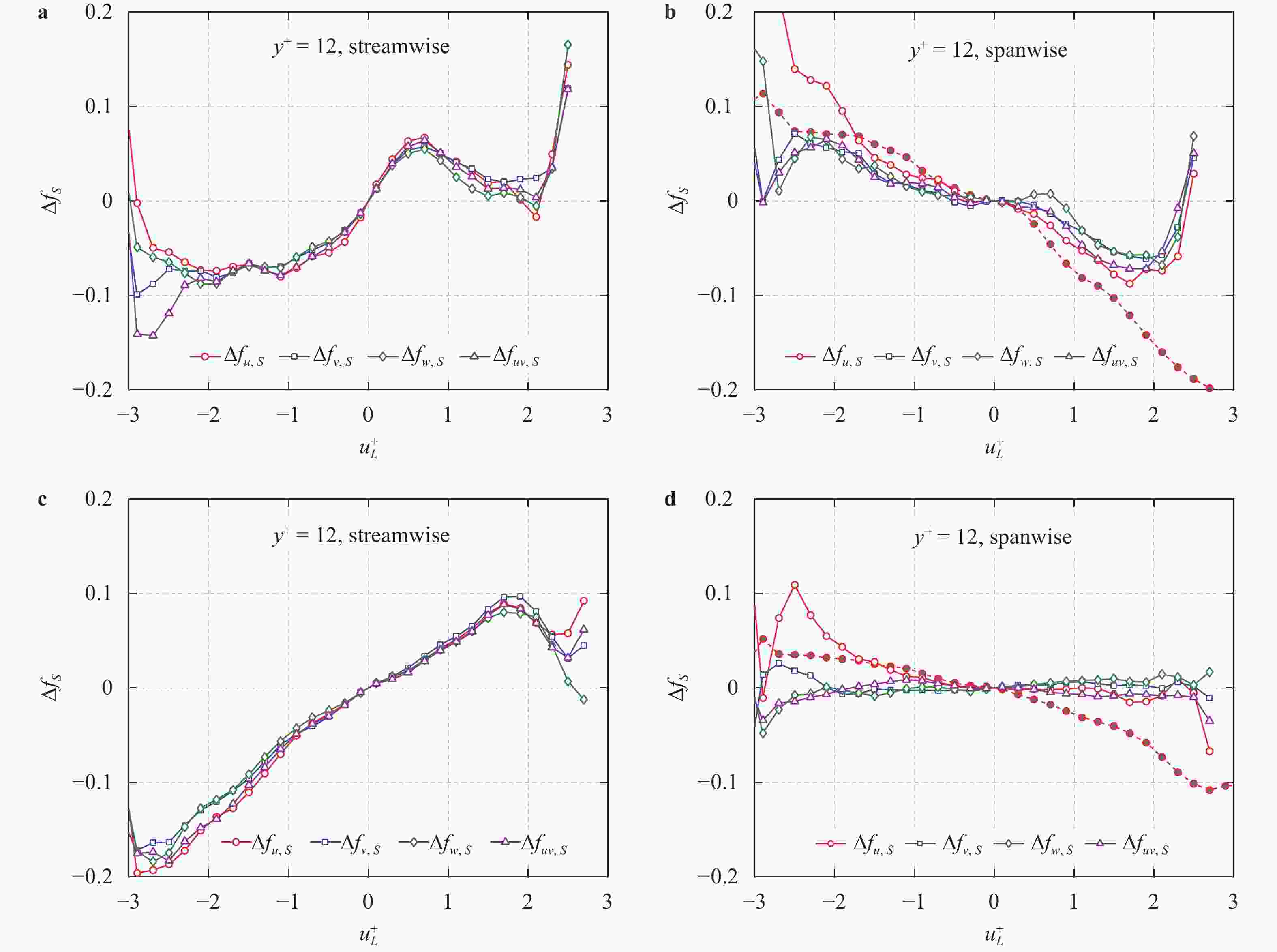Institute of Mechanics,
Chinese Academy of Sciences
2021 Vol.11(1)
column
Display Mode: |
Theoretical and Applied Mechanics Letters 11 (2021) 100220.
doi: 10.1016/j.taml.2021.100220
Abstract:
In this work, a physics-informed neural network (PINN) designed specifically for analyzing digital materials is introduced. This proposed machine learning (ML) model can be trained free of ground truth data by adopting the minimum energy criteria as its loss function. Results show that our energy-based PINN reaches similar accuracy as supervised ML models. Adding a hinge loss on the Jacobian can constrain the model to avoid erroneous deformation gradient caused by the nonlinear logarithmic strain. Lastly, we discuss how the strain energy of each material element at each numerical integration point can be calculated parallelly on a GPU. The algorithm is tested on different mesh densities to evaluate its computational efficiency which scales linearly with respect to the number of nodes in the system. This work provides a foundation for encoding physical behaviors of digital materials directly into neural networks, enabling label-free learning for the design of next-generation composites.
In this work, a physics-informed neural network (PINN) designed specifically for analyzing digital materials is introduced. This proposed machine learning (ML) model can be trained free of ground truth data by adopting the minimum energy criteria as its loss function. Results show that our energy-based PINN reaches similar accuracy as supervised ML models. Adding a hinge loss on the Jacobian can constrain the model to avoid erroneous deformation gradient caused by the nonlinear logarithmic strain. Lastly, we discuss how the strain energy of each material element at each numerical integration point can be calculated parallelly on a GPU. The algorithm is tested on different mesh densities to evaluate its computational efficiency which scales linearly with respect to the number of nodes in the system. This work provides a foundation for encoding physical behaviors of digital materials directly into neural networks, enabling label-free learning for the design of next-generation composites.
Theoretical and Applied Mechanics Letters 11 (2021) 100221.
doi: 10.1016/j.taml.2021.100221
Abstract:
A composite absorber made of a polyurethane sponge and multi-layer micro-perforated plates is presented in this study. Results from an acoustic impedance tube test show that the polyurethane sponge can exhibits higher low-frequency sound absorption in front of the micro-perforated plate, while sound absorption at medium and high-frequencies remains low. The physical mechanism behind this is that the micro-perforated plate increases the denpth cavity. If the polyurethane sponge is placed behind the micro-perforated plate, the amplitude of the original absorption peak will remain constant, but the absorption peaks will shift to lower frequencies. The reason for this phenomenon is that porous materials with low flow resistance can be approximately equivalent to fluid, which not only does not affect the resonance absorption coefficient of micro-perforated plate, but also makes the peaks move to low frequency. This study has the potential applications in the sound absorption design of composite structure.
A composite absorber made of a polyurethane sponge and multi-layer micro-perforated plates is presented in this study. Results from an acoustic impedance tube test show that the polyurethane sponge can exhibits higher low-frequency sound absorption in front of the micro-perforated plate, while sound absorption at medium and high-frequencies remains low. The physical mechanism behind this is that the micro-perforated plate increases the denpth cavity. If the polyurethane sponge is placed behind the micro-perforated plate, the amplitude of the original absorption peak will remain constant, but the absorption peaks will shift to lower frequencies. The reason for this phenomenon is that porous materials with low flow resistance can be approximately equivalent to fluid, which not only does not affect the resonance absorption coefficient of micro-perforated plate, but also makes the peaks move to low frequency. This study has the potential applications in the sound absorption design of composite structure.
Theoretical and Applied Mechanics Letters 11 (2021) 100225.
doi: 10.1016/j.taml.2021.100225
Abstract:
Nowadays, studies on the mechanism of macro-scopic nonlinear behavior of materials by accumulation of micro-scopic degradation are attracting more attention from researchers. Among numerous approaches, multiscale methods have been proved as powerful and practical approaches in predicting macro-scopic material status by averaging and homogenizing physical information from associated micro-scopic material behavior. Usually in mechanical problem, the stress, consistent material modulus, and possible material state variables are quantities in interest through the upscaling process. However, the energy-related quantities are not studied much. Some initiative work has been done in the early year including but not limited to the Hill–Mandel condition in multiscale framework, which gives that the macro-scopic elastic strain energy density can be computed by volumetric averaging of that in the micro-scale. However, in the nonlinear analysis, the energy dissipation is an important quantity to measure the degradation status. In this manuscript, two typical multiscale methods, the first-order computational homogenization (FOCH) and reduced-order homogenization (ROH), are adopted to numerically analyze a fiber-reinforced composite material with capability in material nonlinearity. With numerical experiments, it can be shown that energy dissipation is the same for both approaches.
Nowadays, studies on the mechanism of macro-scopic nonlinear behavior of materials by accumulation of micro-scopic degradation are attracting more attention from researchers. Among numerous approaches, multiscale methods have been proved as powerful and practical approaches in predicting macro-scopic material status by averaging and homogenizing physical information from associated micro-scopic material behavior. Usually in mechanical problem, the stress, consistent material modulus, and possible material state variables are quantities in interest through the upscaling process. However, the energy-related quantities are not studied much. Some initiative work has been done in the early year including but not limited to the Hill–Mandel condition in multiscale framework, which gives that the macro-scopic elastic strain energy density can be computed by volumetric averaging of that in the micro-scale. However, in the nonlinear analysis, the energy dissipation is an important quantity to measure the degradation status. In this manuscript, two typical multiscale methods, the first-order computational homogenization (FOCH) and reduced-order homogenization (ROH), are adopted to numerically analyze a fiber-reinforced composite material with capability in material nonlinearity. With numerical experiments, it can be shown that energy dissipation is the same for both approaches.
Theoretical and Applied Mechanics Letters 11 (2021) 100226.
doi: 10.1016/j.taml.2021.100226
Abstract:
In this paper, we propose a stable heat jet approach for accurate temperature control of the nonlinear Fermi-Pasta-Ulam beta (FPU-\begin{document}$ \bf{\beta}$\end{document} ![]()
![]()
In this paper, we propose a stable heat jet approach for accurate temperature control of the nonlinear Fermi-Pasta-Ulam beta (FPU-
Theoretical and Applied Mechanics Letters 11 (2021) 100227.
doi: 10.1016/j.taml.2021.100227
Abstract:
We successfully perform the three-dimensional tracking in a turbulent fluid flow of small axisymmetrical particles that are neutrally-buoyant and bottom-heavy, i.e., they have a non-homogeneous mass distribution along their symmetry axis. We experimentally show how a tiny mass inhomogeneity can affect the particle orientation along the preferred vertical direction and modify its tumbling rate. The experiment is complemented by a series of simulations based on realistic Navier–Stokes turbulence and on a point-like particle model that is capable to explore the full range of parameter space characterized by the gravitational torque stability number and by the particle aspect ratio. We propose a theoretical perturbative prediction valid in the high bottom-heaviness regime that agrees well with the observed preferential orientation and tumbling rate of the particles. We also show that the heavy-tail shape of the probability distribution function of the tumbling rate is weakly affected by the bottom-heaviness of the particles.
We successfully perform the three-dimensional tracking in a turbulent fluid flow of small axisymmetrical particles that are neutrally-buoyant and bottom-heavy, i.e., they have a non-homogeneous mass distribution along their symmetry axis. We experimentally show how a tiny mass inhomogeneity can affect the particle orientation along the preferred vertical direction and modify its tumbling rate. The experiment is complemented by a series of simulations based on realistic Navier–Stokes turbulence and on a point-like particle model that is capable to explore the full range of parameter space characterized by the gravitational torque stability number and by the particle aspect ratio. We propose a theoretical perturbative prediction valid in the high bottom-heaviness regime that agrees well with the observed preferential orientation and tumbling rate of the particles. We also show that the heavy-tail shape of the probability distribution function of the tumbling rate is weakly affected by the bottom-heaviness of the particles.
Theoretical and Applied Mechanics Letters 11 (2021) 100228.
doi: 10.1016/j.taml.2021.100228
Abstract:
Turbulent flows over rough surfaces widely exist in nature and industry. Investigating its mechanism is of theoretical and practical significance. In this work we simulate the turbulent channel flow with rough walls using large-eddy simulation with rough elements resolved using the curvilinear immersed boundary method and compare the results obtained in this work with those in the paper by Yuan and Piomelli (J. Fluid Mech. 2014), where the volume of fluid method was employed for modeling rough elements. The mean streamwise velocity profiles predicted by the two methods agree well with each other. Differences in Reynolds stresses and dispersive stresses are observed, which are attributed to the different approaches in dealing with the complex geometry of the rough surface.
Turbulent flows over rough surfaces widely exist in nature and industry. Investigating its mechanism is of theoretical and practical significance. In this work we simulate the turbulent channel flow with rough walls using large-eddy simulation with rough elements resolved using the curvilinear immersed boundary method and compare the results obtained in this work with those in the paper by Yuan and Piomelli (J. Fluid Mech. 2014), where the volume of fluid method was employed for modeling rough elements. The mean streamwise velocity profiles predicted by the two methods agree well with each other. Differences in Reynolds stresses and dispersive stresses are observed, which are attributed to the different approaches in dealing with the complex geometry of the rough surface.
Theoretical and Applied Mechanics Letters 11 (2021) 100229.
doi: 10.1016/j.taml.2021.100229
Abstract:
In this work we extend the method of the constrained large-eddy simulation (CLES) to simulate the turbulent flow over inhomogeneous rough walls. In the original concept of CLES, the subgrid-scale (SGS) stress is constrained so that the mean part and the fluctuation part of the SGS stress can be modelled separately to improve the accuracy of the simulation result. Here in the simulation of the rough-wall flows, we propose to interpret the extra stress terms in the CLES formulation as the roughness-induced stress so that the roughness inhomogeneity can be incorporated by modifying the formulation of the constrained SGS stress. This is examined with the simulations of the channel flow with the spanwise alternating high/low roughness strips. Then the CLES method is employed to investigate the temporal response of the turbulence to the change of the wall condition from rough to smooth. We demonstrate that the temporal development of the internal boundary layer is just similar to that in a spatial rough-to-smooth transition process, and the spanwise roughness inhomogeneity has little impact on the transition process.
In this work we extend the method of the constrained large-eddy simulation (CLES) to simulate the turbulent flow over inhomogeneous rough walls. In the original concept of CLES, the subgrid-scale (SGS) stress is constrained so that the mean part and the fluctuation part of the SGS stress can be modelled separately to improve the accuracy of the simulation result. Here in the simulation of the rough-wall flows, we propose to interpret the extra stress terms in the CLES formulation as the roughness-induced stress so that the roughness inhomogeneity can be incorporated by modifying the formulation of the constrained SGS stress. This is examined with the simulations of the channel flow with the spanwise alternating high/low roughness strips. Then the CLES method is employed to investigate the temporal response of the turbulence to the change of the wall condition from rough to smooth. We demonstrate that the temporal development of the internal boundary layer is just similar to that in a spatial rough-to-smooth transition process, and the spanwise roughness inhomogeneity has little impact on the transition process.
Theoretical and Applied Mechanics Letters 11 (2021) 100230.
doi: 10.1016/j.taml.2021.100230
Abstract:
Dislocation creep at elevated temperatures plays an important role for plastic deformation in crystalline metals. When using traditional discrete dislocation dynamics (DDD) to capture this process, we often need to update the forces on N dislocations involving ~N2 interactions. In this letter, we introduce a multi-scale algorithm to speed up the calculations by dividing a sample of interest into sub-domain grids: dislocations within a characteristic area interact following the conventional way, but their interaction with dislocations in other grids are simplified by lumping all dislocations in another grid as a super one. Such a multi-scale algorithm lowers the computational load to ~N1.5. We employed this algorithm to model dislocation creep in Al-Mg alloy. The simulation leads to a power-law creep rate in consistent with experimental observations. The stress exponent of the power-law creep is a resultant of dislocations climb for ~5 and viscous dislocations glide for ~3.
Dislocation creep at elevated temperatures plays an important role for plastic deformation in crystalline metals. When using traditional discrete dislocation dynamics (DDD) to capture this process, we often need to update the forces on N dislocations involving ~N2 interactions. In this letter, we introduce a multi-scale algorithm to speed up the calculations by dividing a sample of interest into sub-domain grids: dislocations within a characteristic area interact following the conventional way, but their interaction with dislocations in other grids are simplified by lumping all dislocations in another grid as a super one. Such a multi-scale algorithm lowers the computational load to ~N1.5. We employed this algorithm to model dislocation creep in Al-Mg alloy. The simulation leads to a power-law creep rate in consistent with experimental observations. The stress exponent of the power-law creep is a resultant of dislocations climb for ~5 and viscous dislocations glide for ~3.
Theoretical and Applied Mechanics Letters 11 (2021) 100234.
doi: 10.1016/j.taml.2021.100234
Abstract:
The behaviors of a neutrally buoyant ellipsoidal particle in vortical flow confined by a microcavity are numerically studied using the Lattice-Boltzmann method. For specific initial position, an isolated ellipsoid may develop a stable limit cycle orbit inside microcavity due to the interaction between particle and the carrier flow. It is observed that ellipsoidal particles of different shapes exhibit two different stable rotational modes depending on the initial orientation and lateral position. A prolate spheroid tends to enter a tumbling mode whereas an oblate spheroid is apt to achieve a rolling mode. The evolution of rotational velocities along the stable orbit is also analyzed for particles of defferent shapes.
The behaviors of a neutrally buoyant ellipsoidal particle in vortical flow confined by a microcavity are numerically studied using the Lattice-Boltzmann method. For specific initial position, an isolated ellipsoid may develop a stable limit cycle orbit inside microcavity due to the interaction between particle and the carrier flow. It is observed that ellipsoidal particles of different shapes exhibit two different stable rotational modes depending on the initial orientation and lateral position. A prolate spheroid tends to enter a tumbling mode whereas an oblate spheroid is apt to achieve a rolling mode. The evolution of rotational velocities along the stable orbit is also analyzed for particles of defferent shapes.
Theoretical and Applied Mechanics Letters 11 (2021) 100222.
doi: 10.1016/j.taml.2021.100222
Abstract:
The amplitude and frequency modulation of near-wall flow structures by the large-scale motions in outer regions is studied in turbulent channel flows. The proper orthogonal decomposition (POD) method is applied to investigate the interactions between the near-wall motions and the large-scale flow modes of the outer regions based on two datasets from direct numerical simulation of turbulent channel flows at Reynolds numbers of 550 and 1000. The fluctuations in the fields\begin{document}$u^+$\end{document} ![]()
![]()
\begin{document}$v^+$\end{document} ![]()
![]()
\begin{document}$w^+$\end{document} ![]()
![]()
\begin{document}$-(uv)^+$\end{document} ![]()
![]()
The amplitude and frequency modulation of near-wall flow structures by the large-scale motions in outer regions is studied in turbulent channel flows. The proper orthogonal decomposition (POD) method is applied to investigate the interactions between the near-wall motions and the large-scale flow modes of the outer regions based on two datasets from direct numerical simulation of turbulent channel flows at Reynolds numbers of 550 and 1000. The fluctuations in the fields
Theoretical and Applied Mechanics Letters 11 (2021) 100238.
doi: 10.1016/j.taml.2021.100238
Abstract:
 Submit a Paper
Submit a Paper
 Subscription
Subscription
News
MORE+
Call for Papers
MORE+
- Crossing-Mechanics Driven by Big Data
- Machine learning in the fluid mechanics research of wind energy
- Mechanics of Origami/Kirigami structures and metamaterials
- New insights and perspectives on impact biomechanics for human tissues: from injury prevention, protection to protective equipment
- Environmental Mechanics for Extreme Natural Events



